Meeting menu
Abstracts 2024
The programme of the 18th Annual WAEH Meeting continues to be an inspiring and informative event filled with groundbreaking presentations and discussions. This year’s programme includes a selection of great abstracts, highlighting the latest developments and innovations within the field. The diversity of topics makes this an unmissable opportunity for professionals to enrich their knowledge and take advantage of valuable networking opportunities.
For more information about the abstracts, see below!

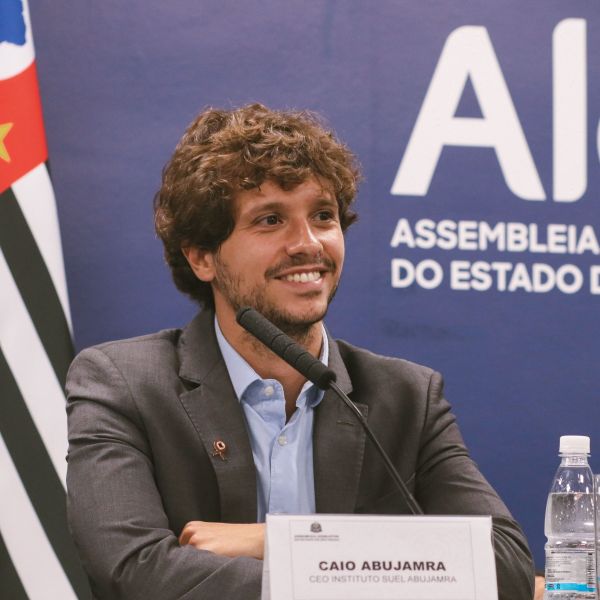
Mr. Caio Abujamra
AI helping indigenous communities have the first contact with ophthalmology in Brazil
5 key short sentences highlighting the essence of my presentation
- Artificial Intelligence allows the project to provide quick and accurate eye care diagnoses to indigenous communities in hard-to-reach areas.
- Portable equipment with AI, such as the slit lamp and the retinal camera, makes it possible to efficiently screen thousands of patients in remote regions.
- AI reduces diagnostic time and improves accuracy, enabling healthcare professionals to serve more people and identify eye conditions with greater precision.
- With the support of AI, the project extends the reach of eye care, bringing the first specialized medical contact to populations that previously had no access.
- The integration of AI enhances the work of doctors by assisting in patient screening and prioritization, optimizing the flow of care, and minimizing human error.
Summary of my presentation
The “Village in Focus” project aims to bring essential eye care to remote indigenous communities across Brazil, using portable equipment enhanced with Artificial Intelligence (AI). Over 2024 and 2025, the project plans to screen 25,000 indigenous individuals through a series of five key exams: visual acuity, autorefraction, tonometry, slit lamp examination with AI for cataract detection, and retinography with AI for identifying retinal issues.
AI plays a central role in speeding up diagnosis and enhancing precision. The slit lamp uses AI to analyze eye videos and detect cataracts, classifying their severity from 1 to 4, while the retinal camera uses AI to evaluate retinal images, flagging potential issues. These AI-driven technologies allow for more efficient screening in underserved areas, helping healthcare workers identify eye conditions earlier and refer patients to ophthalmologists when needed.
Although AI assists in the diagnostic process, final medical evaluations are performed by doctors, ensuring a combination of technology and human expertise. The project not only improves access to primary eye care but also reduces the time required for diagnosis, bringing life-changing medical attention to populations that might otherwise lack access.
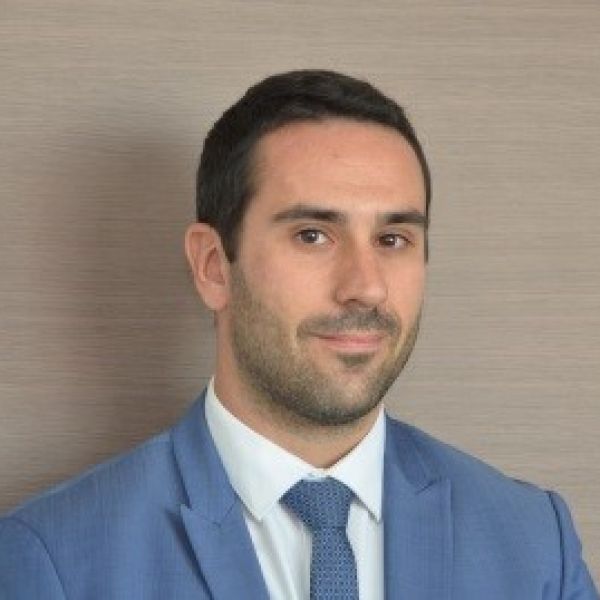
Mr. Nils Avanturier
The Patients Partners programme at the 15-20 National eye hospital: an innovative way to train and involve patients in daily and long-term projects
5 key short sentences highlighting the essence of my presentation
- The Patients Partners project at the 15-20 National eye hospital aims to place the patient at the center of considerations by fostering patient partnership
- This innovative project involves training patients with a proper university programme derived from their own experience of illness or visual impairment to integrate them into healthcare processes, research, and the transformation of health and digital pathways
- The project involves collaboration among various stakeholders, including IHU-Forsight, Streetlab, the University of Patients and professionals of the 15-20 Hospital, This project seeks to develop the roles of patient partners by measuring patient-perceived outcomes, improving the patient experience, integrating patients into therapeutic education, and utilizing their expertise to transform patient pathways.
- The group of Patient Partners, the G7 Vision, embodies solidarity, mutual aid, and the strength of the collective in this innovative patient-professional collaboration approach
- The project is a first in France regarding patients with eye diseases. Selected from different vision-related conditions (Glaucoma, Retina and Rare deseases), the Patient Partners are trained to mobilize their experience as expertise for the community, using appropriate interviewing and communication tools.Selected from different vision-related conditions (Glaucoma, Retina and Rare deseases), the Patient Partners are trained to mobilize their experience as expertise for the community, using appropriate interviewing and communication tools, Selected from different vision-related conditions (Glaucoma, Retina and Rare deseases), the Patient Partners are trained to mobilize their experience as expertise for the community, using appropriate interviewing and communication tools. Selected from different vision-related conditions (Glaucoma, Retina and Rare deseases), the Patient Partners are trained to mobilize their experience as expertise for the community, using appropriate interviewing and communication tools.
Summary of my presentation
The Patients Partners project at the 15-20 National eye hospital aims to place the patient at the center of considerations by fostering patient partnership. This innovative project involves training patients with a proper university programme derived from their own experience of illness or visual impairment to integrate them into healthcare processes, research, and the transformation of health and digital pathways. The project involves collaboration among various stakeholders, including IHU-Forsight, Streetlab, the University of Patients and professionals of the 15-20 Hospital, to train and support these patient partners in their new roles.
Selected from different vision-related conditions (Glaucoma, Retina and Rare deseases), the Patient Partners are trained to mobilize their experience as expertise for the community, using appropriate interviewing and communication tools. The contractualization of patient partners is based on an engagement charter, mission sheets, and partnership contracts, allowing some of them to carry out remunerated interventions.
This project seeks to develop the roles of patient partners by measuring patient-perceived outcomes, improving the patient experience, integrating patients into therapeutic education, and utilizing their expertise to transform patient pathways.
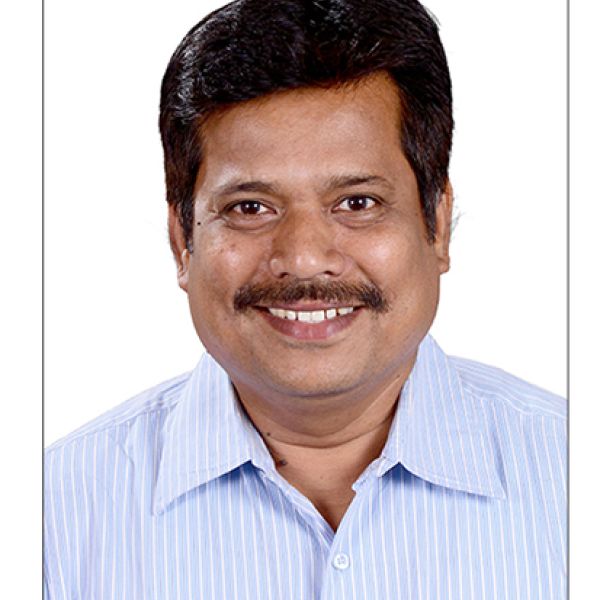
Mr. Ganesh Babu Balu Subburaman
Novel Approach for Enhancing Effective Cataract Surgical Coverage: Lessons from a Pilot Initiative at Aravind Eye Hospital, INDIA
5 key short sentences highlighting the essence of my presentation
- Cataract and refractive errors are leading causes of global blindness and visual impairment
- Effective cataract surgical coverage (eCSC) and effective refractive error coverage (eREC)
- Achieving global target requires a more comprehensive approach
- Achieving eCSC involves all patients in need of cataract surgery
- Aravind Eye Hospital is piloting an initiative for comprehensive approach
Summary of my presentation
Recognizing the need for a holistic approach, Aravind Eye Hospital is piloting an initiative to enhance effective coverage. By adopting this comprehensive approach, Aravind hopes develop an intervention model that others too can adopt.

Mr. Ganesh Babu Balu Subburaman
Study of Evidence-Based Management (EBM) Practices in Eye Hospitals: Findings from the WAEH Project
5 key short sentences highlighting the essence of my presentation
- Information analysis and utilization are foundational to many organizational excellence frameworks
- Effective utilization of information requires a culture
- Healthcare administrators are responsible for organizational health, akin to clinicians responsible for patient health
- However, the adoption of EBM has been slow compared to clinicians
- Identifying the variation in adoption among members will facilitate cross-learning, resulting enhanced eye care services
Summary of my presentation
The survey is currently open, and the data will be analysed and presented at the upcoming WAEH meeting. Based on the findings, appropriate measures will be recommended for cross-learning, ultimately resulting in enhanced eye care services.
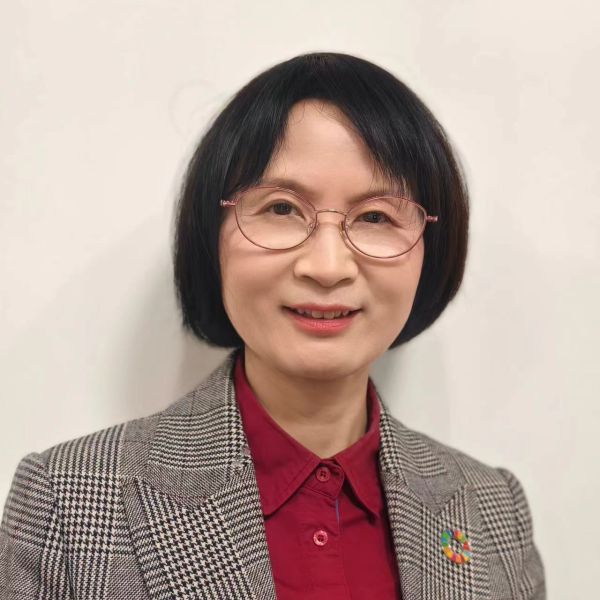
Mrs. Yanyan Chen
Development of a decision aid to support decision making in laser therapy for patients with primary angle closure
5 key short sentences highlighting the essence of my presentation
- Development of a laser therapy decision aid for patients with primary angle closure.
- Using the Ottawa Decision Support Framework and International Patient Decision Aids Standard as theoretical guidance.
- Through two rounds of Delphi expert consultation.
- The first draft of the decision aid for laser therapy for patients with primary angle closure.
- The laser therapy decision aid for patients can provides a scientifically effective means of supporting patients participation in their own safety management and enhancing the quality of decision making.
Summary of my presentation
Through two rounds of Delphi expert consultation, integrating input from experts in the fields of glaucoma clinical medicine, ophthalmic nursing and public health management on the overall framework and specific content of this patient decision aid, resulting in a revised version. The first draft of the laser treatment decision aid tool for patients with primary Angle closure includes 7 aspects, including clarifying decision making options, assessing patients’ decision needs, providing information about the disease and laser treatment, analyzing the risks and benefits of alternative options, clarifying patients’ values, providing multi-party support to guide decision making, and confirming decisions. It can be summarized into 7 first- level indicators, 14 second-level indicators and 30 third-level indicators.
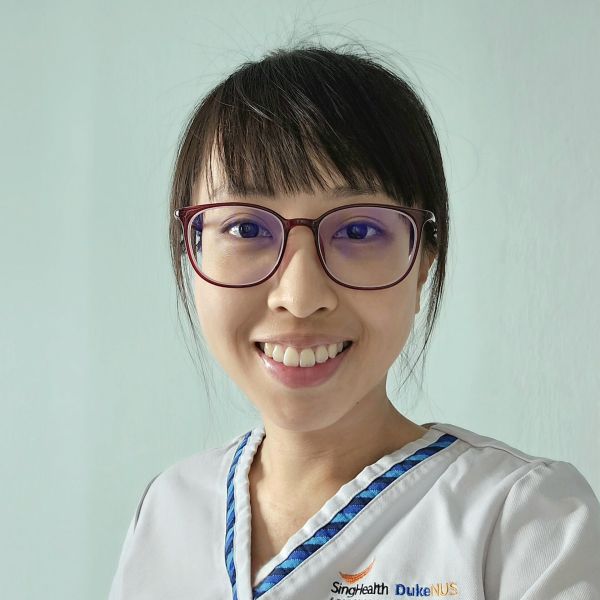
Mrs. Becky Chia
Enhancing Compliance with Time-Out Procedures for Eye Laser Procedures at Singapore National Eye Centre: A PDCA Approach
5 key short sentences highlighting the essence of my presentation
- The Singapore National Eye Centre (SNEC) improved compliance with time-out procedures for eye laser treatments using the PDCA framework.
- Over three months, workflow modifications were implemented to address noncompliance issues.
- Key changes included making laser lenses less accessible to doctors to ensure adherence.
- An audit in December 2023 showed 100% compliance.
- This project highlights the importance of time-out process and documentation for enhancing patient safety and care quality.
Summary of my presentation
This quality improvement project at the Singapore National Eye Centre (SNEC) aimed to evaluate and enhance the time-out process for eye laser procedures, which is critical for patient safety and provider accountability. Utilizing the PDCA (Plan-Do-Check-Act) framework, the project spanned three months to identify and address factors contributing to noncompliance. Key interventions included modifying workflows to increase the inaccessibility of laser lenses by doctors, thereby reinforcing adherence to the time-out process. Following the PDCA cycle, an audit conducted in December 2023 demonstrated a 100% compliance rate with the time-out procedure and documentation.
The findings highlight the efficacy of systematic workflow improvements and the PDCA approach in achieving full adherence. Meticulous documentation of time-out procedures not only meets regulatory standards but also enhances patient safety, improves communication among healthcare providers, and prevents procedural errors. This project underscores the significance of investing in proper implementation and documentation practices to foster a culture of safety and ensure high-quality care. By prioritizing these measures, SNEC can continue to improve patient outcomes and uphold its commitment.
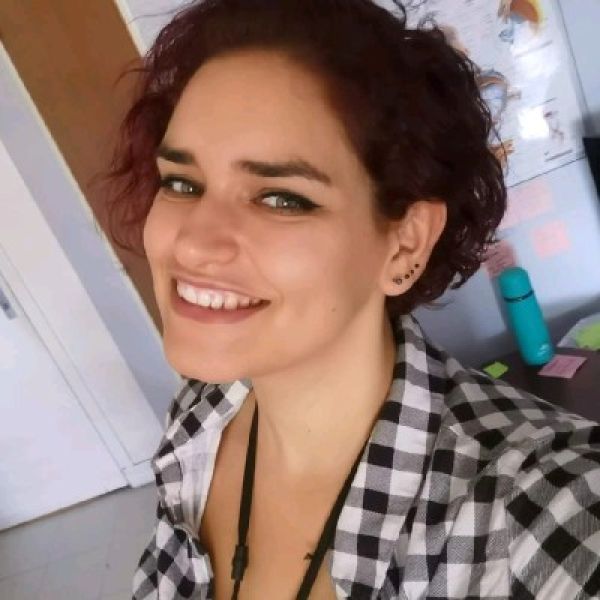
Mrs. Marie Darche
Three dimensional histology of entire human eyes : a major breakthrough in eye imaging
5 key short sentences highlighting the essence of my presentation
- Traditional histological techniques are constrained by sectioning artifacts and the loss of three-dimensional structure, limiting their utility in correlating with clinical imaging.
- The ClearEye protocol, combined with light sheet fluorescence microscopy (LSFM), addresses these challenges by enabling high-resolution, fast, volumetric imaging of cleared, intact human eyes
- Our study highlights complex 3D anatomical features, providing new insights into ocular perfusion, nerve pathways, and age-related changes.
- This innovative approach bridges the gap between clinical imaging and histological data, promising a powerful tool for studying structural-functional relationships and intricate ocular diseases
- The study has already receveid a world-wide recognition and has been presented at several congress, inclunding ARVO.
Summary of my presentation
Traditional histological techniques are constrained by sectioning artifacts and the loss of three-dimensional structure, limiting their utility in correlating with clinical imaging. The ClearEye protocol, combined with light sheet fluorescence microscopy (LSFM), addresses these challenges by enabling high-Innovation in Ophthalmology (including cutting-edge research) resolution, fast, volumetric imaging of cleared, intact human eyes. Our study highlights complex 3D anatomical features, providing new insights into ocular perfusion, nerve pathways, and age-related changes. This innovative approach bridges the gap between clinical imaging and histological data, promising a powerful tool for studying structural-functional relationships and intricate ocular diseases.

Mrs. Kristy Davidson
Environmental Sustainability- Creating a Culture of Wellbeing
5 key short sentences highlighting the essence of my presentation
- Managing operational costs alongside delivering exceptional patient care is an ongoing challenge
- Beyond cost savings and environmental benefits, reducing energy consumption contributes to improved patient care
environments. - By adopting more energy-efficient practices, healthcare facilities can not only protect their financial health but also
play a pivotal role in supporting healthier communities and a more sustainable future. - Healthcare organizations in the United States spend over $6.5 billion annually on energy costs
- Examples of energy-efficient initiatives that Wilmer has implemented
Summary of my presentation
Managing operational costs alongside delivering exceptional patient care is an ongoing challenge. Some of the most energy-intensive buildings in the commercial sector are healthcare facilities. In fact, healthcare organizations in the United States spend over $6.5 billion annually on energy costs (and it continues to rise as the demand for services increases). This continuous operation, combined with the use of sophisticated medical equipment and the need for stringent climate control to ensure patient comfort and safety, illustrates the importance of energy-efficient practices and technologies, not just as an operational necessity but as a strategic imperative.
Beyond cost savings and environmental benefits, reducing energy consumption contributes to improved patient care environments. An energy-efficient building has better air quality and more comfortable temperatures contributing to overall patient satisfaction. By adopting more energy-efficient practices, healthcare facilities can not only protect their financial health but also play a pivotal role in supporting healthier communities and a more sustainable future. A comprehensive approach is needed to solve challenges, including leveraging technology, engaging stakeholders, securing funding, and prioritizing projects that will have the most positive impact. When harmonized, we can successfully implement energy management strategies that reduce costs, enhance sustainability, and support their primary mission.
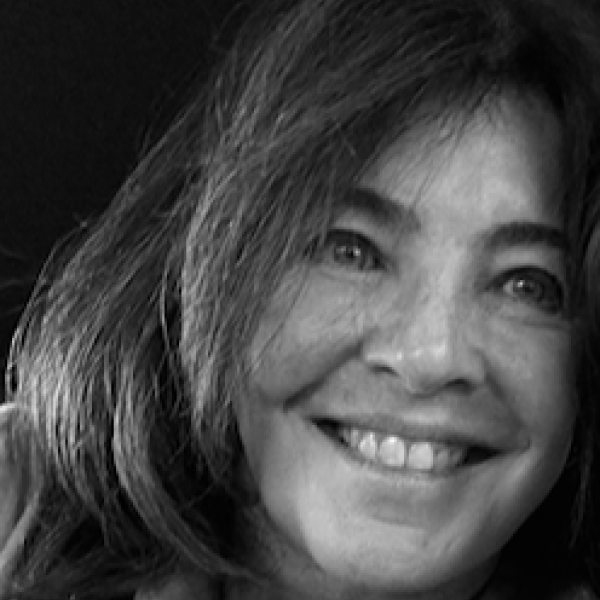
Mrs. Nancy Dietrich
ROP Program for nurses
5 key short sentences highlighting the essence of my presentation
- Prevention for protection of visual function in preterm babies
- The more premature the baby is or the lower the birth weight, the higher the chances of developing retinopathy of prematurity.
- All preterm infants with birth weight below 1.500 g and gestational age below 32 weeks should be screened by fundus examination.
- Use a predictive checklist which reduces the number of unnecessary examinations in infants at lower risk of severe rop
- The fundus examination should be performed by nursesbetween the fourth and sixth weeks of life
Summary of my presentation
ROP program for nurses: is a prevention work protection of visual function in preterm babies. Retinopathy of prematurityc(ROP) is a vasoproliferative disease of the retina of multifactorial factors in premature newborns and it is one of the mains causes of childhood blindness. Timely detection of ROP is the key action to protect visual functions. The ropscore checklist is an instrument built in order to predict innovation in ophthalmology (including cutting-edge research)
Severe ROP screening for uganda population due to the lack of internet in the country which safely reduces the number of unnecessary examinations in infants at lower risk of severe ROP. The examinations should be performed by nurses when the weight is below 1.500 g and gestational age is below 32 weeks of life. The nurses should use an image equipment for the fundus photos. All the images should be send to an ophthalmologist to be examined. After having a plenty of results collected by the checklist of ROP a predictive algorithm could be built from the profile of africa population.
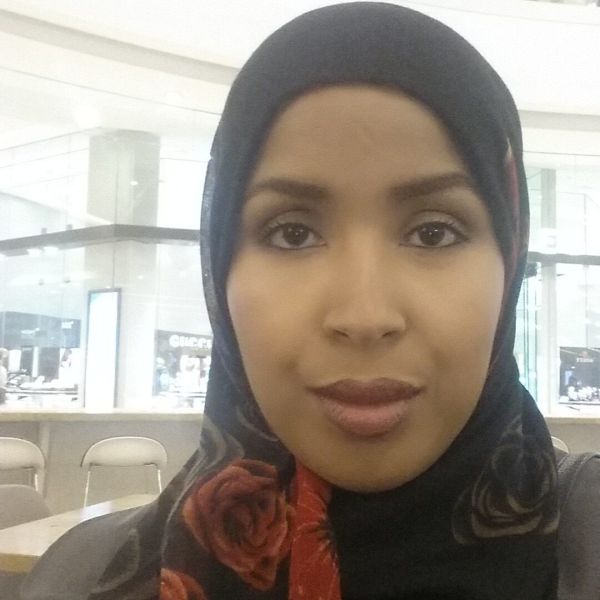
Mrs. Fardowsa Dirir
Enhancing Patient Care through Virtual Reality: Elevating Staff Competence and Compassion in Caring for Visually Impaired Patients
5 key short sentences highlighting the essence of my presentation
- Presentation Overview -This initiative aims to improve the quality of care provided to visually impaired patients by employing Virtual Reality (VR) technology for comprehensive staff training. The project is a response to feedback from Patient Advice and Liaison Services (PALS) and patient complaints, highlighting a need for better understanding and accommodation of the unique needs of visually impaired patients. A pilot was undertaken to assess the viability of the project. This presentation will discuss the project and pilot outcome.
- Conception and Initiation: Focus on funding and content development.
- Challenges faced: Issues related to software, VR expertise, and funding.
- Pilot Structure: Delivery of training to staff, including a debrief following the training.
- Pilot results and outcomes: Evaluation of the pilot’s success and impact.Summary of my presentation
Enhancing Patient Care through Virtual Reality: Elevating Staff Competence and Compassion in Caring for Visually Impaired Patients
Overview
This initiative aims to improve the quality of care provided to visually impaired patients by employing Virtual Reality (VR) technology for comprehensive staff training. The project is a response to feedback and patient complaints, highlighting a need for better understanding and accommodation of the unique needs of visually impaired patients.
Objective
Utilise VR training to boost staff compassion, confidence, and competency in caring for visually impaired patients across various hospital settings, including outpatient clinics, waiting rooms, and theatres.
Measuring Impact
The impact of the VR training will be evaluated through:
- Conducting pre- and post-training surveys to gauge confidence levels and overall satisfaction with the training.
- Patient Feedback: Monitoring reductions in patient complaints through PALS and assessing improvements via the Friends and Family Test (FFT).
- Aiming for at least 75% participation from patient-facing staff across the trust. Results from Pilot •
- The pilot indicated a strong need for this training.
- Staff reported increased understanding and compassion towards visually impaired patients.
- They noted positive impacts on their practices and engagement with patients
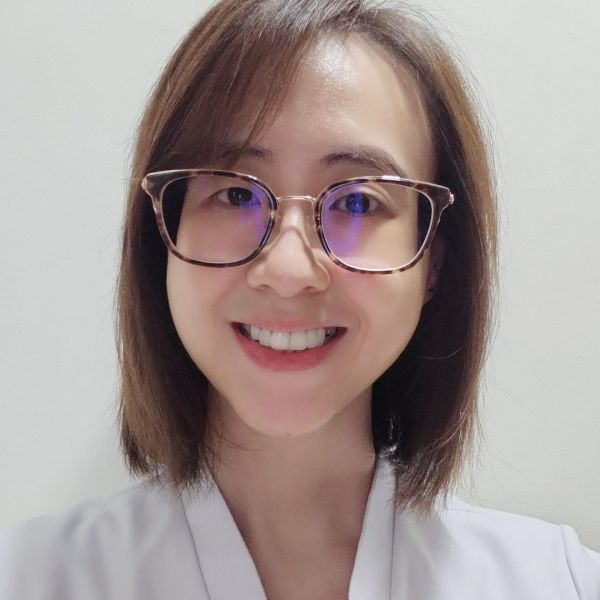
Mrs. Jasmine Ek
Prevention of Abuse and Harassment
5 key short sentences highlighting the essence of my presentation
- Abuse and harassment in healthcare is on the rise
- Increse in the form of verbal, by patients
- Most staffs find reporting process is tedious and daunting
- Singapore launch framework in December 2023, supporting zero-tolerance policy
- Share initiatives launch in SNEC and MOH on how to handle these situations
Summary of my presentation
Abuse and harassment in the healthcare sector has been on the rise in the recent years and it has become a prevalent issue. A survey done by Singapore National Eye Centre (SNEC) in year 2021 and 2022 found out there is an increase of abuse, especially in the form of verbal, by patients. However, most are being brought up informally between colleagues or supervisor as most felt that the reporting process is tedious and daunting, and the fear of being viewed negatively further discourage them from coming forward. To better safeguard healthcare workers from abuse and harassment, Singapore’s Minstry of Health (MOH), together with tripartite workgroup launch a framwork in December 2023, supporting zero-tolerance policy towards abuse and harassment. This oral presentation will share the initiatives launched in SNEC and MOH on how to handle these situations.
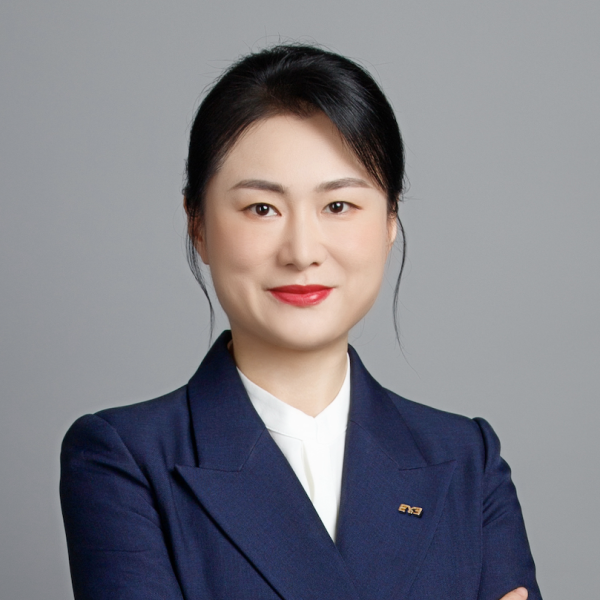
Mrs. Jun Feng
The Path to High-Quality Development of Aier Eye Hospital Group Medical Services
5 key short sentences highlighting the essence of my presentation
- A patient-centered medical value loop
- A comprehensive discipline brand system
- A comprehensive architecture for all disciplines
- A digital intelligent system
- Social responsibility
Summary of my presentation
Aier Eye Hospital Group, over the past 22 years, has grown into the world’s largest chain of eye hospitals, dedicated to eye health with a patient-centered approach. Aier emphasizes a value system of “knowledge, trust, choice, and recommendation.” Internationally, Aier aims to enhance its brand by providing an exceptional patient experience and showcasing Chinese ophthalmic expertise globally. Committed to first- class technology and comprehensive discipline development, Aier fosters talent through a full-spectrum training model and innovative research platforms. Aier also prioritizes service optimization, building a digital intelligent system to improve medical convenience and a service improvement system for the entire value chain. Actively participating in public welfare, Aier has won the “Chinese Charity Award” three times, promoting eye health education across all life stages. Moving forward, Aier will focus on “strengthening the foundation, establishing high standards, and promoting integration,” developing a medical network to offer accessible, high-quality services and creating world-class ophthalmic centers to advance China’s ophthalmic capabilities. Through a coordinated strategy of medical, education, research, production, and investment, Aier fosters the development of ophthalmology and visual science.
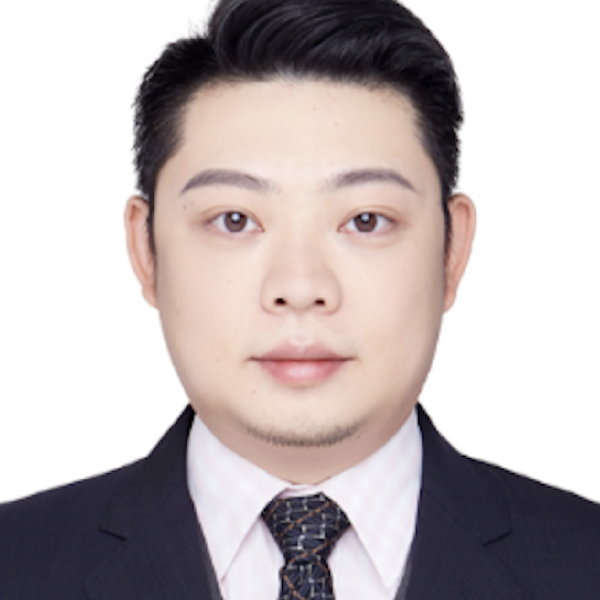
Mr. Ke Feng
AI enabling AIER Eye health education
5 key short sentences highlighting the essence of my presentation
- Eye Health Education
- AI Interaction
- Fundus Diagnosis AI
- Patient Health Management
- Science and Education Bases
Summary of my presentation
Eye health education paradigm in AIER Eye Hospital Group: Led by the medical team, the health education service team assists in providing eye health education. This speech mainly focuses on the application of AI interaction for patient screening and education, utilizing the hospital’s science popularization zone for large-scale patient science popularization.
Leverage AI to improve efficiency. The application of fundus diagnosis AI and related equipment can improve the detection efficiency of fundus diseases in different application scenarios, mainly for eye health inspection outside hospitals, cooperation with primary medical institutions, and patient health management; Application of AI intelligent customer service, patient consultation, the production of Artificial Intelligence Generated Content to improve the efficiency of brand promotion and science popularization.
Based on national health policy requirements, AIER carries out eye health education and displays achievements in building and setting up Science and Education Bases.
In the hospital area, AIER provides patient education through eye health education seminars, in-hospital aesthetics, answer materials, and post-surgery cases. Use the mobile Internet and combine the media for social communication.
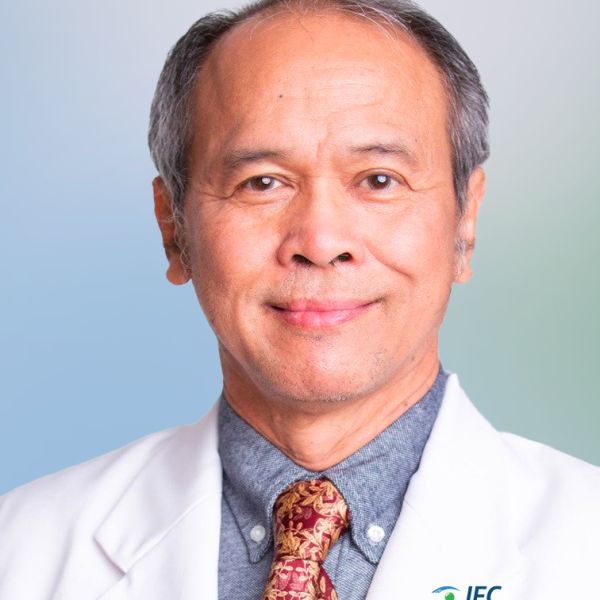
Prof. Tjahjono D. Gondhowiardjo, MD, PhD
JEC Eye Hospitals and Clinics: Pioneering Innovation and Sustainability through a Learning Festival and Hospital-Based Residency Program
5 key short sentences highlighting the essence of my presentation
- Learning Festival
- Hospital Bases Residency Program
- Sustainability
- Comprehensive Training Ophthalmology
- Academic Learning
Summary of my presentation
Background: JEC Eye Hospitals and Clinics have been at the forefront of ophthalmic care in Indonesia. Recognizing the importance of continuous education and innovation, JEC has initiated programs to foster a culture of learning among its staff. A significant recent achievement is the Ministry of Health’s appointment of JEC to host a hospital-based ophthalmologist residency program, traditionally been university based.
Objectives: This presentation shares JEC’s experience in organizing a Learning Festival designed to inspire talent within the organization. The festival featured activities such as workshops, seminars, and hackathons, fostering collaboration and creativity. Additionally, the presentation highlights the newly established hospital-based residency program, aimed at ensuring sustainable high-quality ophthalmic care by training future ophthalmologists through comprehensive practical and academic education.
Results: The Learning Festival saw active participation from both medical and non-medical staff, generating innovative ideas and projects. This initiative has boosted employee morale and engagement, resulting in tangible improvements in patient care and operational efficiency. Although the residency program is newly established, JEC is committed to providing rigorous training and mentorship, ensuring a steady pipeline of skilled ophthalmologists.
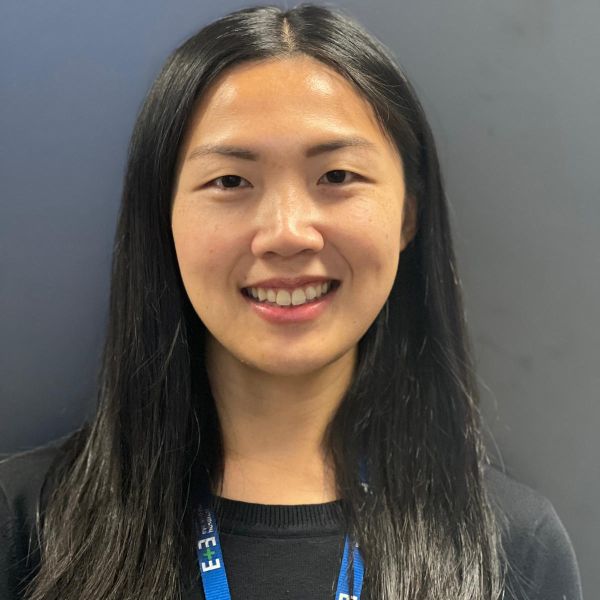
Mrs. Margaret Got
Scan and Learn: Harnessing QR codes to empower and educate patients
5 key short sentences highlighting the essence of my presentation
- Unfortunately, not all patients who are given eyedrops are counselled on how to use it.
- Created a cautionary and advisory label containing a QR code leading patients directly to the ‘How to apply eyedrops’ video and applied this label to all eyedrops supplied to patients.
- The views on the video had almost tripled after implementing the QR code label proving that we have been able to reach more patients by incorporating modern technology.
- We received fantastic feedback from patients about how easy it was to use the QR code and to access this valuable and educational material.
- We have been able to increase the breadth and reach of education and information to a wider set of patients in the community.
Summary of my presentation
Many patients have difficulty administering eyedrops due to lack of education or incorrect technique. Our pharmacists use an educational video on how to apply eye drops to aid counselling, however not all patients are counselled by a pharmacist.
In consultation with Consumers, we designed a label containing a QR code leading patients to this video and applied it to all eyedrops.
From January to March 2024, the video had an average of 60 views per month. We implemented the QR code label to all eyedrops mid-March 2024. The average views in the first quarter post-implementation increased to 164 views, almost triple the views than pre-implementation.
We also conducted a survey on 27 patients who received eyedrops with this label. 100% of surveyed patients who had not previously used eyedrops watched the video and fed back that it was a valuable tool for education.
From this project we have been able to educate more patients on correct eyedrop administration techniques. This project has demonstrated that patients are willing to engage in digital forms of educational material and incorporating modern technology methods into patient education can increase the breadth and reach of information to a wider set of patients in the community.
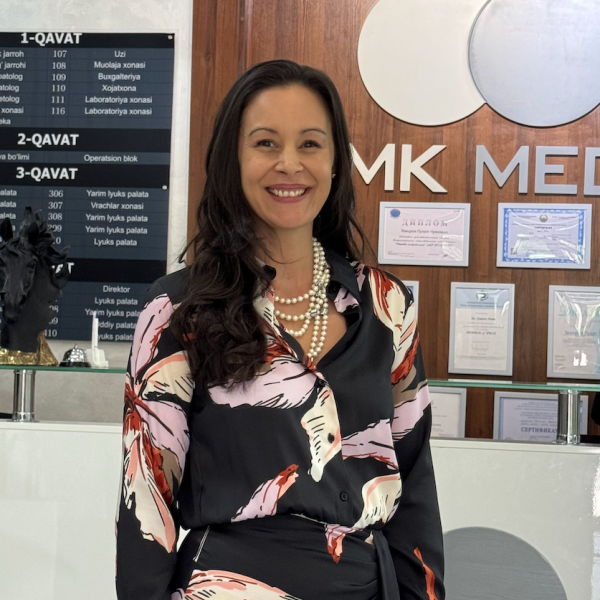
Mrs. Nikki Hafezi
Venture Philanthropy in Ophthalmology
5 key short sentences highlighting the essence of my presentation
- Building the foundation of a for-profit medical institution to improve the overall quality of vision healthcare and education.
- With a strong financial foundation and robust business plan, do well before you do good.
- Focus on medical education to transition need for expensive expatriots to improve the quality of affordable and local
clinicians and staff members. - Invest in modern technology to improve reproducibility in diagnostic examinations that will lead to improve vision healthcare and patient satisifaction.
- Engage in research to attract medical talent and to improve reputation of cutting edge medicine.
Summary of my presentation
In Uzbekistan, establishing a non-profit organization has many time-consuming requirements. Therefore, the National Eye Institute in Tashkent established a for-profit institution (LLC) with a non-profit (MESCA Foundation) investing in the NEI as the majority shareholder. The concept is that the NEI will strive to be profit-generating but with the equal focus of supporting the non-profit’s mission. This mission is to improve the quality of and access to vision and eye healthcare in Central Asia. A portion of the profits that the NEI generates will be invested back into public health, outreach, research, as well as education and training activities of clinicians and technical staff members. In terms of sustainability, the concept is that the dependency will be shifted from the know-how and expertise of expatriates to the local clinicians and technical staff through continuous education and educational courses on good clinical practice standards as well as trainings on modern technology. The goal is that this model of venture philanthropy to support the overall public health of the nation can be adopted in other fields of medicine. Once this goal is met, then the advancement and improved access of healthcare will be achieved.
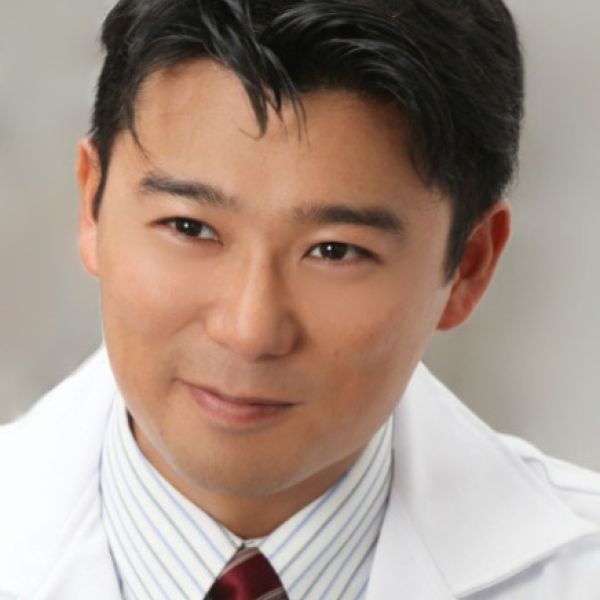
Dr. Wilson Hida
Transforming Eye Care in Latin America: Integrating Medical Education, Technology, and Artificial Intelligence in an Expanding Hospital Chain
5 key short sentences highlighting the essence of my presentation
- Introduction: • Briefly introduce your hospital chain, emphasizing its presence and impact in Latin America. • Highlight the growing need for technological innovations in ophthalmology.
- Medical Education: • Explain how your hospital chain has implemented advanced educational programs for training ophthalmologists and healthcare professionals. • Mention any partnerships with educational institutions and the role of virtual or augmented reality in surgical training.
- Technology Integration: • Describe how your chain leverages technology to improve patient care and streamline clinical operations. • Include the implementation of telemedicine, electronic health records (EHR), and cloud-based systems for enhancing data sharing and decision-making across hospitals.
- Artificial Intelligence (AI) in Ophthalmology: • Focus on how AI is being used in your hospitals for diagnostics, disease detection (e.g., retinal diseases), and personalized treatment plans. • Mention the potential of AI to improve outcomes and reduce costs, particularly in underserved areas.
- Impact on Healthcare in Latin America: • Provide evidence or case studies showing the improvements in patient outcomes, accessibility, and affordability of eye care services across Latin America as a result of these innovations.
Summary of my presentation
Summarize how the integration of medical education, technology, and AI is transforming ophthalmology and improving patient care in Latin America. • Highlight your hospital chain’s role as a leader in advancing these fields in the region.
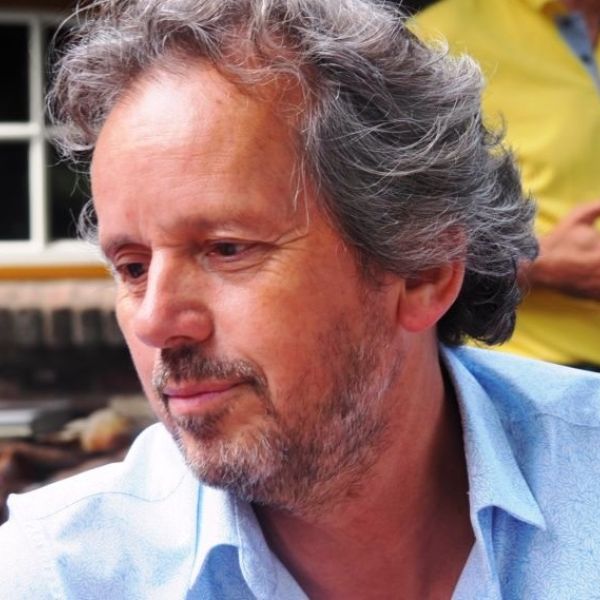
Mr. Jos Hubers
First results of the Exchange programme
5 key short sentences highlighting the essence of my presentation
- From the HR CoP, the idea arose to let employees learn from each other
- The first exchange took place between staff of Hopital National 15- 20 in Paris and the Rotterdam Eye Hospital
- We describe the approach and learning objectives of the participants
- Participants will explain their experiences
- We describe options for follow-up
Summary of my presentation
Presentation by Nils Avanturier, Directeur Général par intérim, Hôpital National des 15-20 and Jos Hubers, manager HR(D) Rotterdam Eye Hospital.
We work in a very tight labor market with a lot of competition from other hospitals/organizations. Finding and retaining employees is therefore one of our biggest challenges.
It is difficult to compete on working conditions (salary) with other hospitals/organizations. We all have some idea of how we present our own hospital as “special“. Simultaneously, we see that “special is not so special yet”.
We have a strong WAEH network. We do not yet always exploit the power of the network to learn from each other.
Learning and development opportunities are key to retaining employees. That leads us to the idea of adding something really special.
We believe that a structural exchange program with WAEH eye hospitals can strengthen:
our labor market proposition and also ensure an attractive perspective for our current employees in the context of retention and development allowing the possibility to learn from each other, discover new perspectives, and exchange best practices that can contribute to the enhancement of eye care in both institutions.
Exchange programme participants will share their experiences via a video link.

Mr. Duc Huynh
Member introduction: Saigon Eye Hospital, Vietnam
5 key short sentences highlighting the essence of my presentation
- Where we build our strengths
- Our expertise
- Our passion
- Our recognations
- Our commitment as a WAEH member
Summary of my presentation
Established in 2004, Saigon Eye Hospital is the first private eye hospital in Vietnam. Throughout 20 years of development, they have developed into Vietnam’s largest and leading ophthalmology hospital chain.
Saigon Eye Hospital’s highly skilled doctors bring years of expertise and advanced training to deliver exceptional eye care. They adhere to rigorous clinical standards, ensuring precision and safety in every procedure. Saigon Eye Hospital prioritizes patient comfort and satisfaction, creating a seamless and supportive care experience.
By working closely with other WAEH members, they strengthen the capabilities to deliver outstanding outcomes for our patients. Saigon Eye Hospital is dedicated to enhancing eye health awareness and services within our local and national communities.
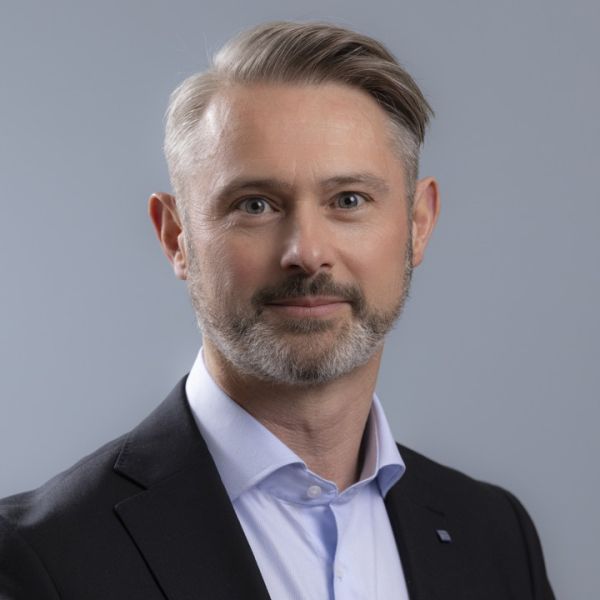
Mr. Sten Kjellström
Home monitoring of Glaucoma project: the Need for Patient Education and Involvement
5 key short sentences highlighting the essence of my presentation
- Traditional glaucoma care often misses critical eye pressure variations, highlighting the need for more continuous monitoring.
- The HOPE system empowers patients through education and easy-to-use home monitoring technology, improving engagement and treatment compliance.
- Real-time data sharing enables personalized treatment, catching issues that could lead to vision loss if undetected.
- Educated and involved patients are more proactive in managing their health, transforming the traditional care model.
- By integrating AI, the system will become scalable and reduce the burden on patients and healthcare providers alike.
Summary of my presentation
My presentation on “Home Monitoring of Glaucoma: The Need for Patient Education and Involvement” emphasizes the limitations of traditional glaucoma care and introduces the HOPE system as a patient-centered solution. The focus is on empowering patients through education and active engagement, while home monitoring provides continuous, accurate data to guide personalized treatment. Clinical results demonstrate the impact of this approach, and future plans include using AI to make care more scalable and alleviate the burden on healthcare systems.
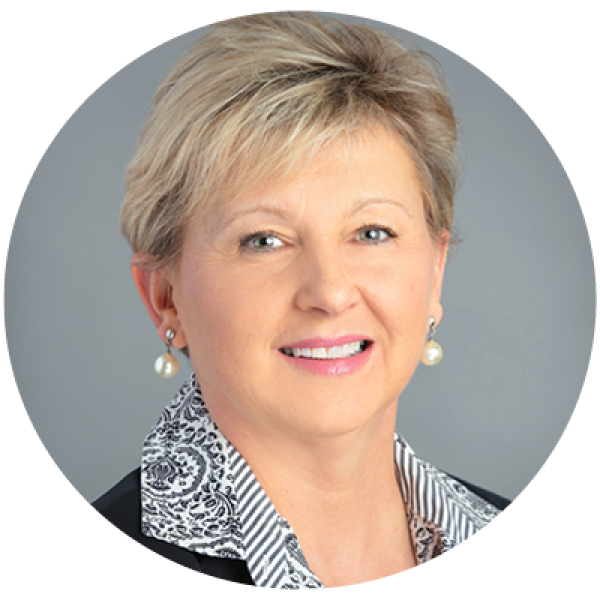
Mrs. Cathy Kowalewski
AI at Wilmer: The establishment of the James P. Gills Jr., M.D. & Heather Gills Artificial Intelligence Innovation Center
Wilmer Eye announced on September 12 the establishment of the James P. Gills Jr., M.D. & Heather Gills Artificial Intelligence Innovation Center. The center will function as a hub for investigating and implementing the use of artificial intelligence in clinical research, scientist and physician education and patient care, all to support the center’s primary mission of preserving patients’ vision and eliminating blindness.
The center will be led by T.Y. Alvin Liu, M.D., who has been nominated to hold the James P. Gills Jr., M.D., and Heather Gills Rising Professorship of Artificial Intelligence in Ophthalmology.
Funding for the center was generously provided by Wilmer alum James P. Gills Jr., M.D., and his wife, Heather. Wilmer marked this exciting news last week with a celebration in the Robert H. and Clarice Smith Building.

Prof. Weizhong Lan
Mapping the future: the road to the next generation of lens design for myopia control
5 key short sentences highlighting the essence of my presentation
- Myopia prevalence
- High myopia blindness risk
- Peripheral-defocus optical interventions
- Customized defocus lenses
- Wide-field retinal refractive error measurement
Summary of my presentation
The prevalnece of myopia has been increasing across the globe, especially in East China. Myopia, especially high myopia, has been listed the first risk to blindess in China. Every year myopia-related ocular complica has led to 300 thounds of new blind people in China alone. Thus, there is an urgent need to find viable interventions to slow down myopia. Recent years have witnessed some of success in slowing down myopia by peripheral-defocus-based optical interventions. However, it has been shown previouly that the peripheral defocus varies significantly across individuals, indicating customized defocus lenses might improve the clinical effectiveness. The presentation will introduce the development of the fisrt instrument developed by AIER, which is able to measure and map the wide-field retinal refractive error in a matter of seconds. The instrument provides an essential tool for the future cumstomization of myopia correction and control, aiming to enable further improvement of clinical efficacy.
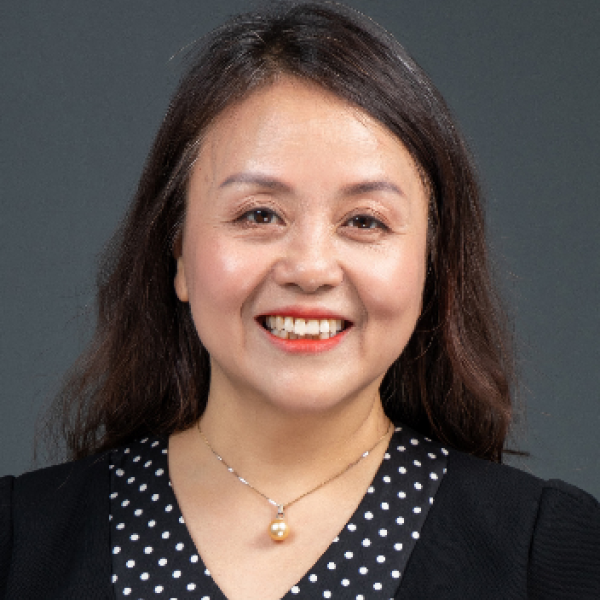
Mrs. Lezhi Li
Hierarchical Training of Ophthalmic Nurses Based on the Dreyfus Model: Study Protocol for a Multicenter Mixed Methods Research
5 key short sentences highlighting the essence of my presentation
- Dreyfus model
- Hierarchical training
- Care management
- Mixed study
- Training programs
Summary of my presentation
Background: There are differences in ophthalmic care across Aier Eye Hospitals among provinces and cities, and the abilities of nursing staff are uneven, which affects care quality, work efficiency, and patients’ experience. Traditional nursing training methods are relatively general, unable to tap the potential of nurses at different levels.
Objectives: To construct training programs for multi-level nurses and explore the effect
Design: a mixed study.
Methods: According to the Dreyfus model, ophthalmic nurses were categorised into six levels from N0 to N5. Corresponding training programs and evaluation criteria were developed. A pilot study will be implementing in 60 hospitals from May 2024 to April 2025. Multicenter interventions will be conducted in 300 hospitals nationwide from May 2025 to May 2027, using a methodology that integrates medical and humanities disciplines, blending online and offline modalities, as well as a synthesis of theory and practice.
Results: The study is expected to produce results in nurses’ motivation, professional knowledge and skills, care quality, and patients’ satisfaction.
Conclusion: This study will provide a hierarchical training framework for multi-level medical institutions and provide practical references for the training of specialized nurses at different tiers.
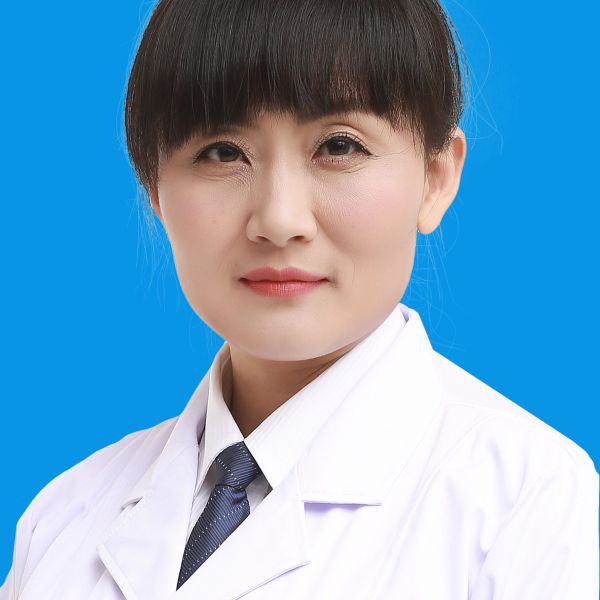
Mr. Ya Li
AIER Eye Hospital’s Discovery of Medical Quality and Safety Consistency Management
5 key short sentences highlighting the essence of my presentation
- We discussed the medical quality and safety consistency management path of conglomerate ophthalmology specialty
hospitals - We have constructed the medical risk management system of AIER Eye Hospital with medical security incidents
management as an entry point. - We Continuously enhanced surgical quality controlment and medical behavior management through info-assisted medical
cloud platform and improved group’s quality management system. - We strengthened state management and facilitated the implementation of conglomerate medical consistency
management by medical KPIs and multi-department joint supervision and et cetera. - AIER Eye Hospital group has completed a plenty of benefited explorations in the quality and safety consistency
management field, and it explored an effective approach to conglomerating medical quality and safety management and promoting high-quality development for group hospitals
Summary of my presentation
We discussed the medical quality and safety consistency management path of conglomerate ophthalmology specialty hospitals. We have constructed the medical risk management system of AIER Eye Hospital with medical security incidents management as an entry point. We discovered problems and solved them. We Continuously enhanced surgical quality controlment and medical behavior management through info-assisted medical cloud platform and improved group’s quality management system. We strengthened state management and facilitated the implementation of conglomerate medical consistency management by medical KPIs and multi-department joint supervision and et cetera.
AIER Eye Hospital group has completed a plenty of benefited explorations in the quality and safety consistency management field, and it explored an effective approach to conglomerating medical quality and safety management and promoting high-quality development for group hospitals
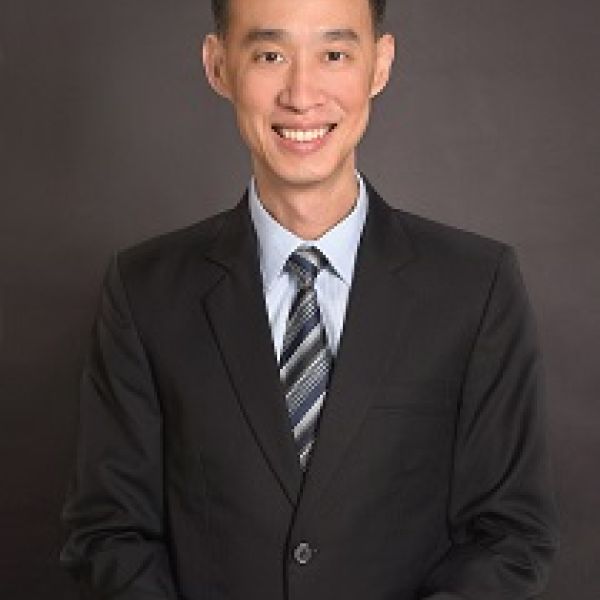
Mr. Hou-Boon Lim
Clinical Service Planning – Projecting Future Patient Load
5 key short sentences highlighting the essence of my presentation
- There is need to project further clinical workload to allow forward planning of resources
- Clinical workload is correlated with population size and demographics, as well as developments in treatment modalities
- By projecting population changes and applying eye service utilisation rates of various demographic age groups, patient workload can be forecasted
- Workload projections will facilitate the determination of future manpower and infrastructure developments
- It will also drive the development of more resource efficient care models
Summary of my presentation
To deliver high quality ophthalmological care to patients, institutions have to ensure that their resources commensurate with the volume of patients they cater to. In countries with evolving population demographics, the number and texture of the patient population can also be expected to change. It is therefore important to develop a robust method of projecting future workload in order to allow for forward planning of manpower, infrastructure and care delivery models. In this presentation, the methodology used by the Singapore National Eye Centre to forecast its future workload, as well as the projections and their implications will be shared. These will be especially relevant for eye hospitals that operate in regions or countries with rapidly aging populations.
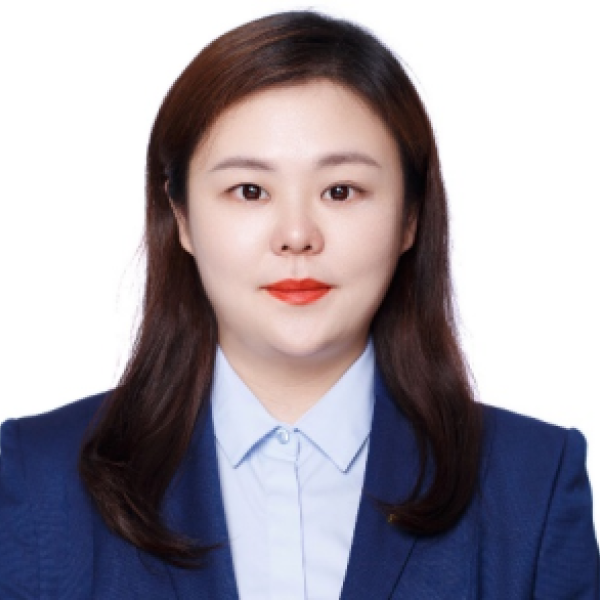
Mrs. Yufei Liu
“All Wisdom for Initial Intention: The Development of Aier Eye Bank and the Charitable Project of Corneal blindness”
5 key short sentences highlighting the essence of my presentation
- Aier Eye Bank
- Aier culture
- Operational model
- China’s cornea donation industry
- Cornea transplantation charity project
Summary of my presentation
This report introduces the 18-years development journey of Aier Eye Bank, which based on Aier culture, including eye bank construction, operational model, public education, and humanistic care. It shows the efforts and progress made in the field of cornea donation by a private ophthalmic institution in collaboration with multiple resources, supported by national authorities. It also reflects the professional and humane development process of China’s cornea donation industry. Furthermore, with the support of cornea donation, Aier Eye Hospital Group has taken the lead in conducting cornea transplantation charity project with charitable foundations since 2016,allowing more impoverished cornea blindness patients to receive timely and professional surgical treatment.
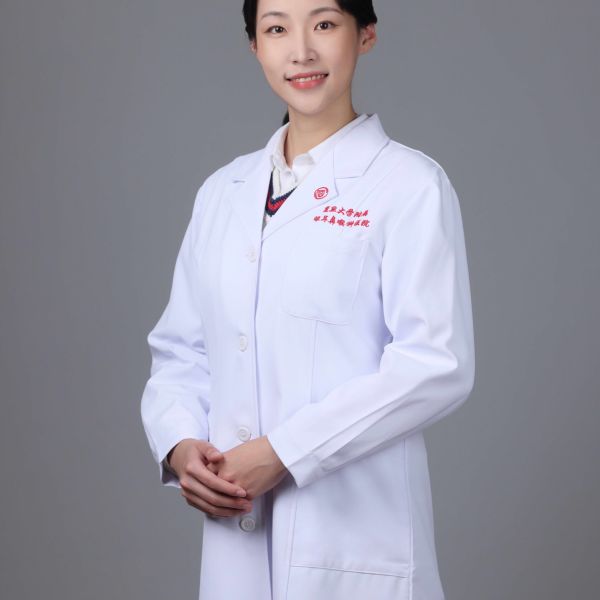
Dr. Ruiqi Ma
Multimodal machine learning enables AI chatbot to diagnose ophthalmic diseases and provide high-quality medical responses: a model development and multicenter study.
5 key short sentences highlighting the essence of my presentation
- Our study developed and evaluated the Intelligent Ophthalmic Multimodal Interactive Diagnostic System (IOMIDS), an embodied conversational agent powered by ChatGPT.
- All models in IOMIDS can actively inquire about symptoms, collect medical histories, and provide highly accurate triage information.
- The multimodal models significantly improve diagnostic accuracy compared to the text model, with the text + smartphone model outperforming the text + slit-lamp model.
- The text + smartphone model is particularly well-suited for diagnosing anterior-segment and orbital diseases, surpassing the performance of the text + slit-lamp model.
- Both the text model and multimodal models demonstrate equally good readability, with the multimodal models generating higher-quality chatbot responses than the text model.
Summary of my presentation
Health data in ophthalmology combines patient histories and visual exams. Chatbot-based multimodal AI has shown promise for more accurate diagnosis than unimodal AI, but it still requires improvement, particularly in actively collecting patient histories and accurately interpreting smartphone images. Our study developed and evaluated the Intelligent Ophthalmic Multimodal Interactive Diagnostic System (IOMIDS), an embodied conversational agent powered by ChatGPT. IOMIDS is designed to diagnose and triage ophthalmic diseases by collecting and analyzing medical histories and eye images captured by slitlamp or smartphone. The system includes a text model and two multimodal models (text + slit-lamp model and text + smartphone model). It can inquire about medical histories centered around chief complaints and provide comprehensive final responses, including diagnoses, triage decisions, and medical recommendations. We evaluated IOMIDS for diagnostic accuracy, triage accuracy, and response quality in a two-stage cross-sectional study across three centers in China, covering 10 subspecialties and 50 diseases. A total of 14168 data entries were used for model development and clinical evaluation.
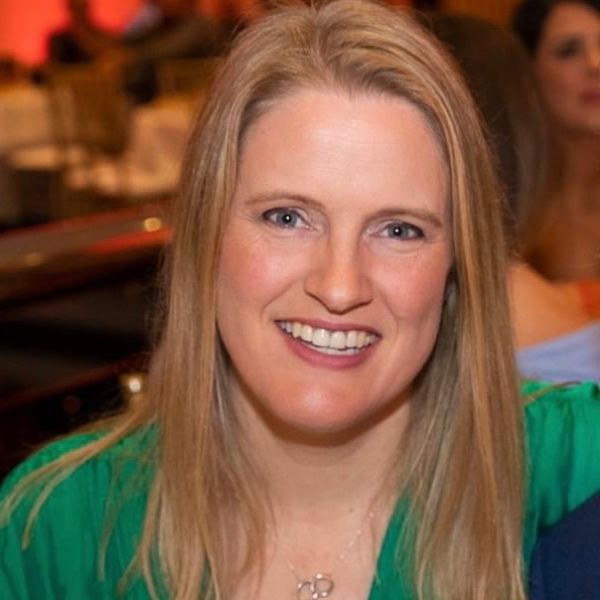
Mrs. Catherine Manusco
Advanced Practice Orthoptics – a one year pilot
With live connection from Australia to China
5 key short sentences highlighting the essence of my presentation
- Advanced Practice
- Novel models of care
- Scope of Practice
- Workforce challenges
- Collaborative care
Summary of my presentation
This presentation will focus on the supported training and development of the Advanced Practice Orthoptists (APO’s) through the engagement of an “Ophthalmology Champion”. In particular the change in confidence levels of the APO’s across the training and development period. The impact of the APOP on patient experience will also be shared.
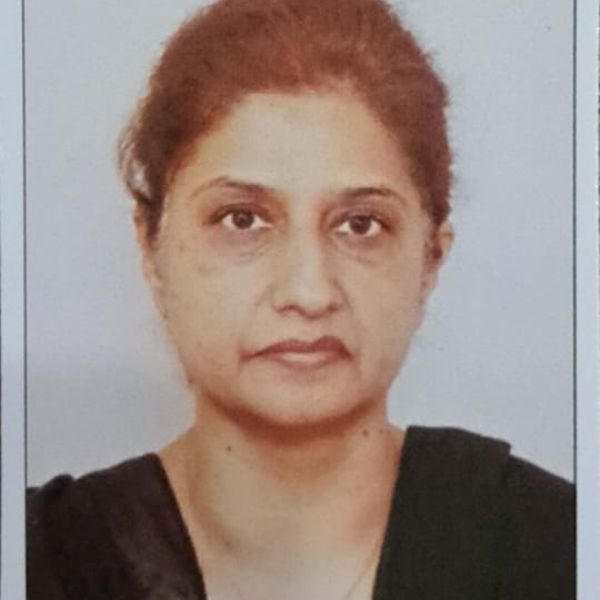
Dr. Iram Maqsood
Fighting blindness with Al Shifa in Pakistan
5 key short sentences highlighting the essence of my presentation
- Unmatchable numbers of patient
- Completely Free Treatment
- Comprehansive Out reach program
- Al Shifa research and Trial center
- Human Resource Development Programs
Summary of my presentation
Al-Shifa Trust was established in 1985 and its first eye hospital started working in 1991. It is a non- governmental non-political organization. The aim and Objectives of ASTEH is prevention and control of blindness.
After establishing Rawalpindi hospital as an apex institution with subspecialties including general ophthalmology, Pediatric ophthalmology, Retina, cornea, Glaucoma, Occuloplastics, Ocular oncology and Light house low vision, ASTEH expend hospitals into Chakwal, Kohat, Muzafferabad and Sukkur. Al-Shifa Eye Hospital has an unmatchable experience of dealing more than 1.5 million OPD and 0.08 million surgeries last year.
Al-Shifa trust also provides rural outreach services with over 4500 screening and surgical camps. Pakistan Institute of Ophthalmology (PIO) is our academic wing since 1994 running programs including fellowship, Public health and Allied health professional training program.
Our research center is a part of many international trials, researches and projects with many publications in national and international journals.ALZA Pharmaceuticals is our pharmaceutical wing, making us self- sufficient.
Our international chapters are in UK, Canada and North America. Al shifa trust has been a World Health Organization (WHO) collaborative center. It is also the only exam center of Royal College of ophthalmologist in Pakistan. We have partnerships with many international NGOs and organizations.
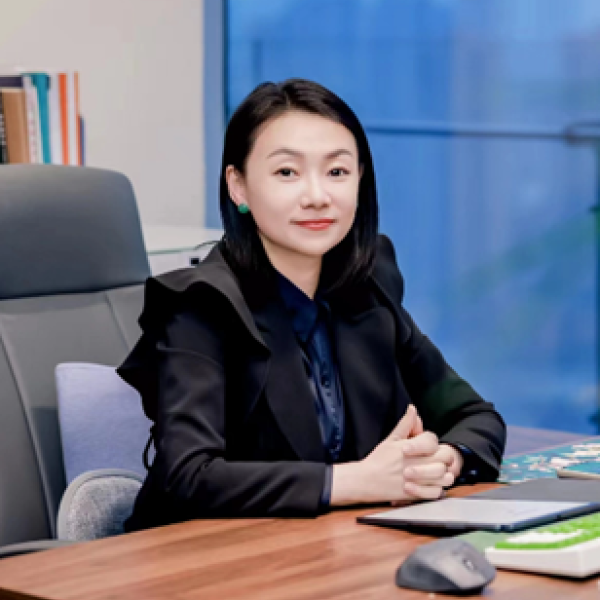
Mrs. Qiwen Mo
Digital Intelligence Finance Drives Sustainable Development
Abstract
This presentation introduces how the Aier financial team contributes to Aier’s steady and high-quality development by managing and controlling financial risks through lean management and digital intelligence. The financial team conducts in-depth research on national and local policies, integrating them closely with corporate practices to empower business operations. Meanwhile, the company has established an online learning platform, the Aier School of Financial Management, which consolidates internal and external training and learning materials to continuously cultivate international and professional financial talents. Furthermore, guided by the goal of achieving carbon neutrality, the company is committed to fulfilling its environmental responsibilities, strengthening cost control, and implementing the ESG concept throughout corporate management, jointly building a sustainable future.
Key words
Digital Intelligence Finance, Direct-line financial management approach, International financial professionals, Cost control, Sustainable Development
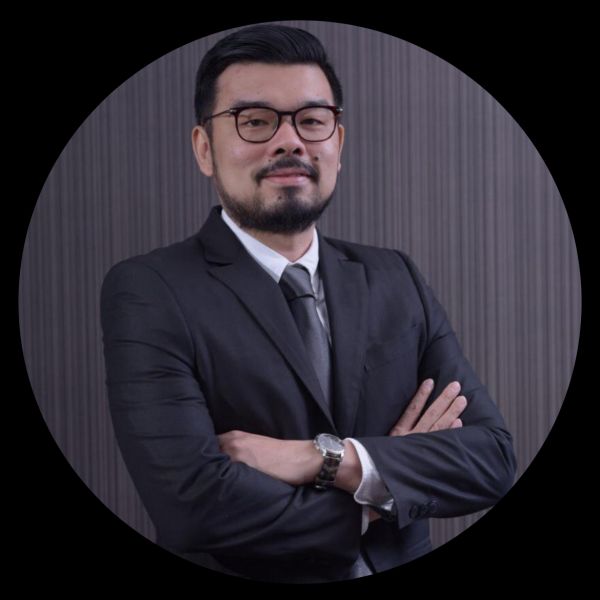
Mr. Adrian Ngo
JEC Eye Hospital & Clinic’s Sustainable & Collaborative Vision for Bali’s Sanur Special Economic Zone
5 key short sentences highlighting the essence of my presentation
- Providing Execptional Eye Care Service in the region
- Sustainable & Environmentaally building design & material
- International Collaborations
- Eye Care integrated with local Balinese wellness
- Enhance Patients Care
Summary of my presentation
JEC Eye Hospital & Clinic’s Sustainable and Collaborative Vision for Bali’s Sanur Special Economic Zone
Abstract:
Background: JEC Eye Hospitals & Clinics, a leader in ophthalmic care in Indonesia, is preparing to open a new Eye Clinic in the Sanur Special Economic Zone, Bali, by 2026. This project underscores JEC’s commitment to expanding high-quality eye care services in the region.
Objectives: This presentation highlights the clinic’s focus on sustainable building design and international collaboration. The clinic’s design emphasizes sustainability by incorporating eco-friendly materials. These features reduce environmental impact and promote a healthier environment for patients and staff. Additionally, the clinic aims to integrate world-class eye care with Balinese wellness practices, providing a holistic approach to patient well-being.
International Collaboration: JEC plans to partner with leading global eye care institutions. These collaborations will facilitate knowledge exchange, joint research, and the introduction of advanced treatments, ensuring the clinic provides top-tier care.
Significance: Scheduled to open in 2026, this project demonstrates JEC’s commitment to healthcare innovation, sustainability, and global collaboration. The new Eye Clinic in Bali will serve as a model for future medical facilities, showcasing how sustainable design and international partnerships can enhance patient care and set new standards in the industry.
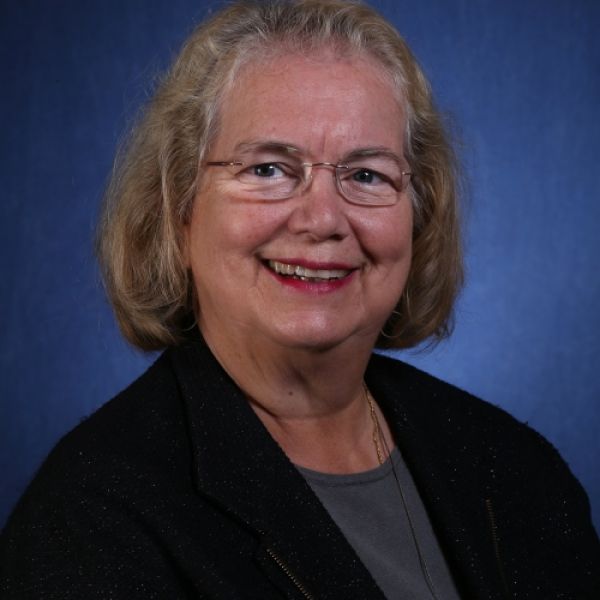
Prof. Christine Nelson
Quality of Work at Kellogg
Evaluation of Cataract Surgery Safety Outcomes at a Tertiary Eye Center Following Implementation of a Standard Operating Procedure
Kellogg Eye Center Quality and Safety Trends 2010-2023
Compliance with Clinic Procedure Time-Out Protocol at MM Kellogg Eye Center
5 key short sentences highlighting the essence of my presentation
- Avoiding safety events in cataract surgery, such as implantation of an incorrect intraocular lens implant (IOL), is of paramount importance.
- While incorrect IOL implantation is a major safety event that often requires a second surgery for correction, there is minimal literature available on how to systematically decrease its occurrence.
- With projected growth in cataract surgery volume worldwide, there is an urgent need for a systematic cataract surgery protocol for eye care providers and institutions to utilize as a foundation to reduce incorrect IOL implantation.
- We analyze the occurrences of incorrect IOL implantation across 10 years in a tertiary referral eye center that typically performs 5,000+ cataract surgery cases per year.
- We share the resultant cataract surgery standard operating procedure (SOP) as well as multi-faceted strategies and longitudinal results as a foundation and benchmark for eye care providers and institutions to systematically improve safety for patients undergoing cataract surgery.
Summary of my presentation
Cataracts are one of the leading causes of reversible blindness, and cataract surgery is one of the most common surgeries performed worldwide. Here, we evaluate the incidence of incorrect intraocular lens (IOL) implantation before and after implementing a cataract surgery standard operating procedure (SOP) devised at a tertiary referral eye center that typically performs 5,000+ cataract surgery cases per year. This presentation describes the Healthcare Failure Mode Effect and Analysis (HFMEA) performed and resultant SOP implemented in 2018 following incorrect IOL events at the eye center. Analysis of safety events following implementation of the SOP and subsequent modifications/re-assessments performed were analyzed. Ultimately, the HFMEA identified 170 processes/sub-processes steps, 177 potential failure modes, and 75 potential failure mode causes. 29 system vulnerabilities were identified through analysis of the failure mode causes and addressed in the SOP. From 2018 to 2023, eight additional incorrect IOL safety events occurred, which led to subsequent revisions of the SOP. The presentation reviews the reasons why the IOL safety events occurred, and the revisions required to ensure further reduction in incorrect IOL implantation. The presentation highlights that continuous education and re-assessment of standardized protocols for cataract surgery is critical to ensure patient safety.

Mr. Zhikun Peng
Constructing a Sustainable Ecology for Charitable Actions on Eye Health
5 key short sentences highlighting the essence of my presentation
- Eye Care Foundation
- Sustainable Ecology
- Charitable solutions
- A strategic action system
- Collaborating with strategic partners
Summary of my presentation
The speech will comprehensively present the exploration of the Eye Care Foundation on seeking charitable solutions in the field of eye health over the past 10 years, sharing its models, practices, and achievements. It will emphasize how to construct a sustainable eye health charity ecology construct a sustainable eye health charity ecology through collaborating with strategic partners such as Aier Eye Hospital and other institutions, and establishing a strategic action system from eye disease aid to capacity training at the grassroot level. It will also elaborate how the actions thereby help reduce poverty and inequality, improve human health and well-being, and promote the achievement of the United Nations Sustainable Development Goals in the context of China’s insufficient and uneven distribution of ophthalmic resources, poverty alleviation, and rural revitalization policies.

Mr. Nguyen Quoc Anh
Member introduction: Cao Thang Eye Hospital, Vietnam
Cao Thang Eye Hospital is proud to be the only eye hospital in Vietnam to have continuously received JCI (Joint Commission International) accreditation – the gold seal of global hospital safety and quality since 2009. Over more than 23 years of development efforts, the hospital’s team of doctors has performed more than 2,000,000 examinations and more than 100,000 successful surgeries, contributing to improving the quality of life of the community through comprehensive and professional eye care services.
Cao Thang Eye Hospital is always committed to:
- A team of medical staff that works methodically and is highly qualified, always provided with opportunities to develop their skills and maintain the highest professional quality.
- Continuously expanding expertise in the field of ophthalmic care with comprehensive research and training programs.
- Encouraging the development, implementation and sharing of innovative treatment procedures & methods that bring high efficiency to eye examination and treatment.
- Providing modern, safe, effective and diverse eye care services suitable for the financial capacity of all customers.
- Ensuring the provision of international-standard healthcare services for patients during their visits to the hospital.
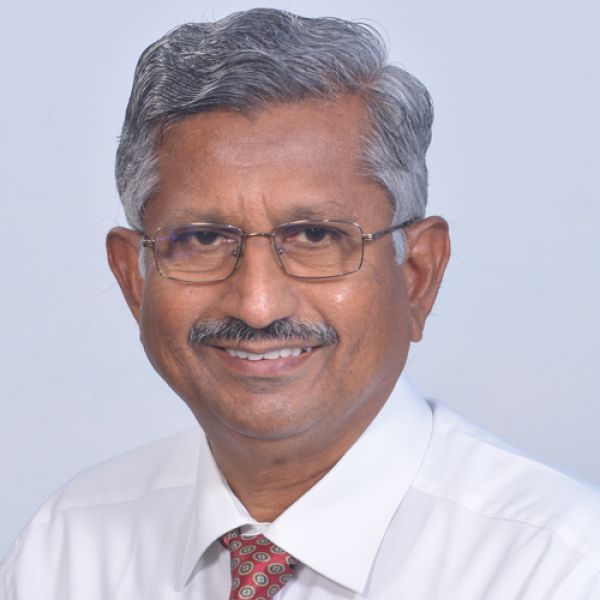
Dr. Ravindran Ravilla
Aravind Experience in ensuring quality & Minimizing Carbon Footprint in large volume Surgery
5 key short sentences highlighting the essence of my presentation
- Sharing the volume of clinical and surgical work and the related demand generation process
- Will share the processes in place to maintain good outcomes and minimsing complications
- Steps to minimise carbon footprint related to accesing the care
- Steps to ensure green energy and recycling all forms of waste
- Comparison of Cataract Surgical Wastes generated in United
States and India
Summary of my presentation
Aravind Experience in ensuring quality & Minimizing Carbon Footprint in large volume Surgery
In its mission to eliminate avoidable blindness, the Aravind Eye Care System, in the southern Indian state of Tamil Nadu, has developed an effective model of care centered on time efficiency and resource efficiency while maintaining good outcomes. The Aravind model is recognized for its financial and social success. Aravind performs 2500 surgeries & laser procedures per working day. Fifty percent of these surgeries are delivered at minimum or no cost to the patient and with better outcomes and lower complication rates. As healthcare professionals worldwide become more aware of and concerned for the public health implications of climate change and excessive resource use. Efficient care delivery model of Aravind, with its assembly-line model for surgery and its use of reusable instruments, serves as an example for reducing the carbon footprint of eye care especially the cataract surgery which is the most performed surgical procedure in the world. The impact of our eye care on reducing the carbon footprint will be presented briefly.
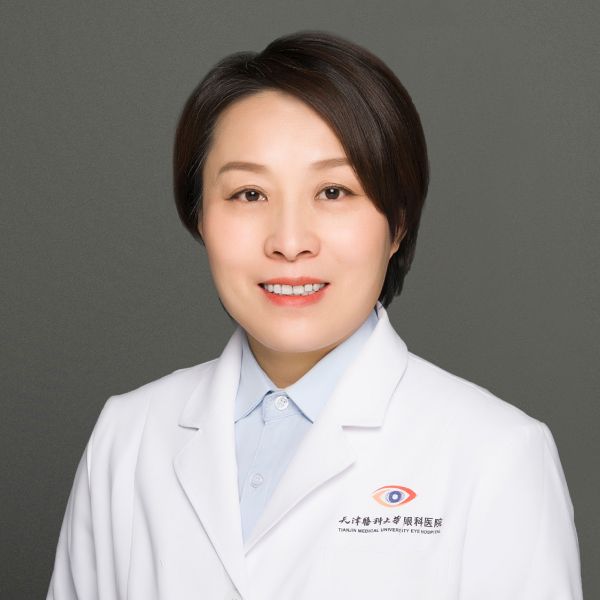
Dr. Wei Ruihua
Twice versus once daily Application of 0.01% Atropine for Myopia Control in Children: A Randomized Controlled Trial
Background
To investigate the efficacy and safety of standard 0.01% atropine at different frequencies (twice daily versus once nightly) for myopia progression.
Methods
In this randomized controlled trial (ChiCTR2200055532), Participants aged 6-13 years with a spherical equivalent (SE) between -6.00 to -0.75D and a best corrected visual acuity of ≥0.8 were enrolled and randomized 1:1 to receive 0.01% atropine eye drops once nightly (QD group) or twice daily (BID group) for one year. The primary endpoint was the change in axial length (AL) after one year.
Results
Seventy participants were included and assigned to the QD (n=34) and BID (n=36) groups, respectively. After one year, the BID group exhibited a significantly smaller increase in mean AL compared with the QD group (0.21±0.18 vs. 0.32±0.14mm, P=0.002), corresponding to a 34% reduction in axial elongation. The BID regimen was 53% more effective in slowing SE progression than the QD regimen, with mean SE changes of -0.31±0.50 vs. -0.66±0.37D (P<0.001). Safety parameters (e.g., amplitude of accommodation, tear film stability, intraocular pressure) remained similar between the two groups (all P>0.05). Although mesopic pupil diameter (PD) increased more in the BID group (0.65±0.63 vs. 0.27±0.69mm, P=0.010), the difference was clinically acceptable and not observed in photopic PD (P=0.297).
Conclusion
Twice-daily administration of 0.01% atropine significantly enhances the management of axial elongation and SE progression compared with once-nightly dosing without increasing the risk of adverse effects.
Keywords
Atropine; Different frequencies; Myopia; Spherical equivalent refraction; Axial length.
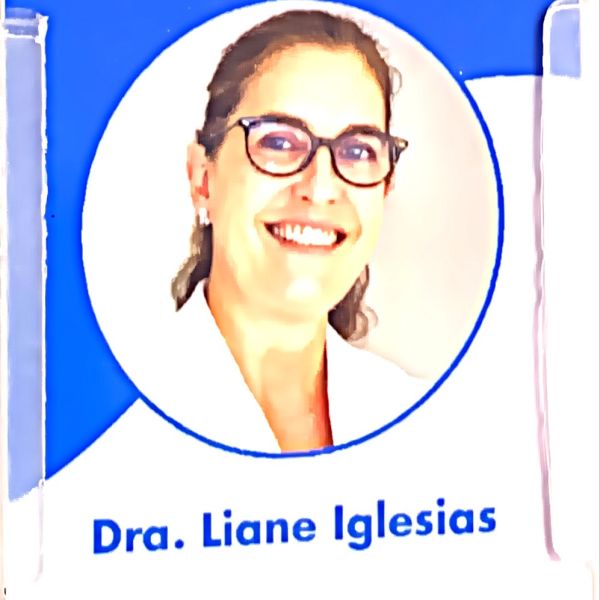
Dr. Liane Sanz Iglesias
Patient Education for a Health Ocular Vision
5 key short sentences highlighting the essence of my presentation
- Monitoring and Self Care
- Health Apps
- Awareness and Education
- Daily Care
- Monitoring Devices
Summary of my presentation
Empowering patients regards to their own ocular vision is essential to allow self – care and prevent ocular diseases.
We will cover several strategies that patients can go through it.
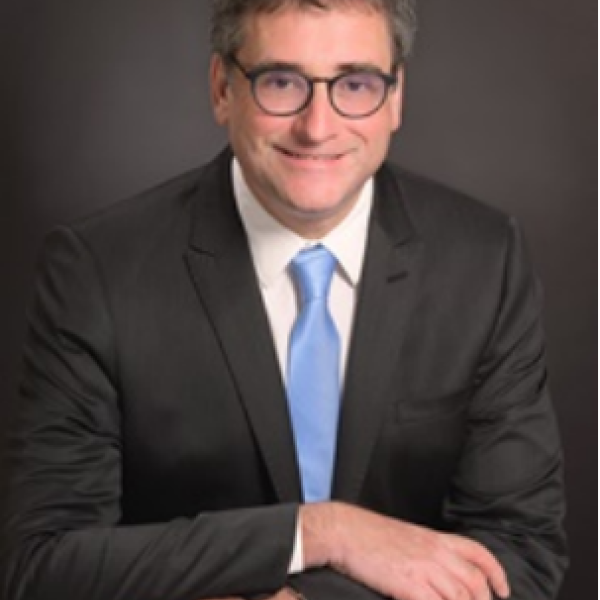
Dr. Leopold Schmetterer
Barriers to translation of AI solutions into clinical praxis
5 key short sentences highlighting the essence of my presentation
- Applicability of AI solutions to external real world datasets
- Burden of false negatives and false positives
- Inadequate facilities
- Inadequate image quality
- Human interaction studies
Summary of my presentation
Artificial intelligence (AI) solutions have attracted much interests in ophthalmology. Whereas multiple papers have been published the translation to clinical ophthalmology is challenging. The present talk will summarize five key elements that hamper translation. Applicability of AI solutions to external real world datasets.
Convolutional neural networks (CNNs) may fail if they were trained on datasets that do not match the target population in terms of ethnicity, age, disease severity and/or diagnostic criteria. Burden of false negatives and false positives. Although the Area under the Curve (AUC) for detection of disease is often high, the application of the CNN still results in many false positives due to the low prevalence. In addition, false security is feigned in false negatives. Inadequate facilities. Whereas CNNs have often been proposed for screening, the screening facilities are frequently not in place.
Establishing a screening facility is expensive and requires support from health care providers. Inadequate image quality. Even the best CNN does not perform well if image quality is insufficient. Continuous training and quality control is an expensive task for achieving optimal results. Human interaction studies. Little is known to which degree AI based solutions will be accepted by health care providers and by patients.

Dr. Hendrik Scholl
Gene Therapy Development for Retinal Diseases
5 key short sentences highlighting the essence of my presentation
- Gene therapy for retinal diseases
- Gene augmentation
- Base editing for Stargardt disease
- Inherited retinal disorders (ABCA4 genes)
- Challenges in gene therapy
Summary of my presentation
The human retina is particularly susceptible for disease caused by mutations in the human genome. Gene therapy is a groundbreaking approach aimed at treating or preventing diseases by modifying the genetic material within a patient’s cells. This field has seen significant advancements such as gene augmentation and gene editing approaches. Gene augmentation involves adding functional copies of a gene to compensate for a defective or missing gene. A prime example is Voretigene neparvovec (Luxturna), the first FDA-approved gene therapy for an inherited retinal disease. This therapy delivers a normal copy of the RPE65 gene to retinal cells, restoring vision in patients with Leber congenital amaurosis or retinitis pigmentosa. Base editing, a newer technique, enables precise modifications of individual DNA bases without introducing double-stranded breaks. This method holds particular promise for diseases like Stargardt disease, a juvenile macular degeneration caused by mutations in the ABCA4 gene. Base editing could potentially correct these mutations at the DNA level, offering a permanent cure. These therapies are at the forefront of personalized medicine, with the potential to transform the treatment landscape for genetic diseases. However, challenges such as delivery methods, long-term efficacy, and ethical considerations remain, necessitating ongoing research in gene therapy development.

Dr. Pall Singh
Patient Education For Marketing Healthcare Services
5 key short sentences highlighting the essence of my presentation
- Patient education improves patient outcomes, patient satisfaction and confidence
- Traditional methods were pamphlets, flyers, wall charts and brief consultation
- Newer methods with technological advances are mobile apps, telehealth, online platform and websites, webinars and live events on social media.
- Educational methods must take into account patients age, literacy level, language, cultural and religious backgrounds
- Patient education is a crucial aspect of health care marketing.
Summary of my presentation
Benefits of patient education are improved patient outcomes and increased patient satisfaction and confidence leading to positive word-of mouth referrals and repeat business.
Traditionally, patient education was through pamphlets, flyers, wall charts or brief consultation with health care providers.
With advances in information technology, newer methods for patient education can be used such as mobile apps, telehealth, online platform and educational websites.
Social media can host live events with question and answer sessions, webinars, twitter and linkedIn. Engaging with patients directly allows healthcare providers to respond to their concerns and doubts and help build patient relationships.
Patient education materials must be clear and in concise language and practical tips and advice given must be easily implemented by patients.
Educational information must take into account the patient’s age, literacy level, and language, cultural and religious backgrounds. Patients preferred learning style must be taken into account. Affordability and availability are important aspects as well.
Patient education is a crucial aspect of health care marketing.
The future of Ophthalmology depends on our patient education playing a leading role in marketing our health care services.
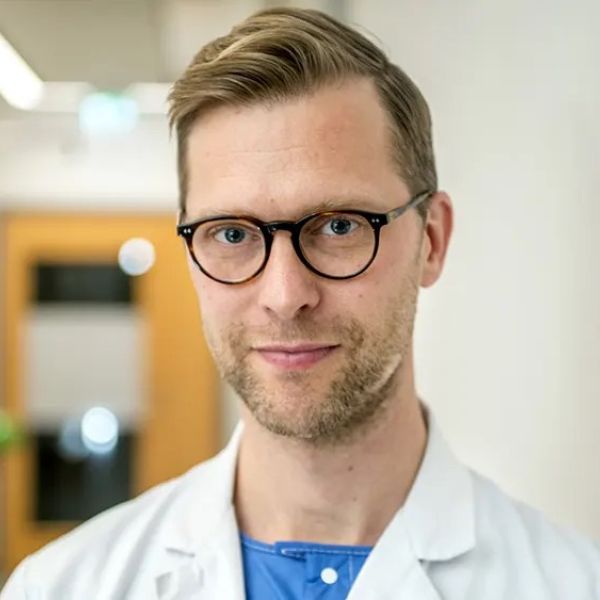
MD Phd Gustav Stålhammar
Melanoma and AI innovations in Sweden
5 key short sentences highlighting the essence of my presentation
- Choroidal melanocytic lesions are common, affecting 4–7% of Caucasians, 1% of Black and Hispanic individuals, and 0.5% of Chinese populations.
- Choroidal melanoma, on the other hand, is lethal in 50% of cases but rare, with an incidence of over 8 cases per million person-years in Northern Europe and fewer than 2 cases per million in South America, Asia, and Africa.
- Accurately detecting the few malignant lesions among the large number of benign counterparts is likely the most cost-effective, rapid, and impactful way of improving survival in choroidal melanoma.
- The task is very difficult for human observers, even subspecialized ocular oncologists, not only because of the overwhelming number of lesions but also due to the difficulty in determining which are malignant.
- Our deep-learning algorithm outperforms most human observers on independent data sets, providing more accurate, quicker, and more consistent assessments.
Summary of my presentation
This study developed and validated a deep learning algorithm to distinguish small choroidal melanomas from nevi using fundus photographs from 688 patients. The algorithm achieved a high AUC of 0.88, outperforming risk factor-based assessments like the MOLES score and TFSOM-UHHD. It outperformed 12 ophthalmologists in sensitivity, and matched the performance of ocular oncologists. These findings suggest the algorithm’s potential clinical utility, with further validation in real-world settings underway.
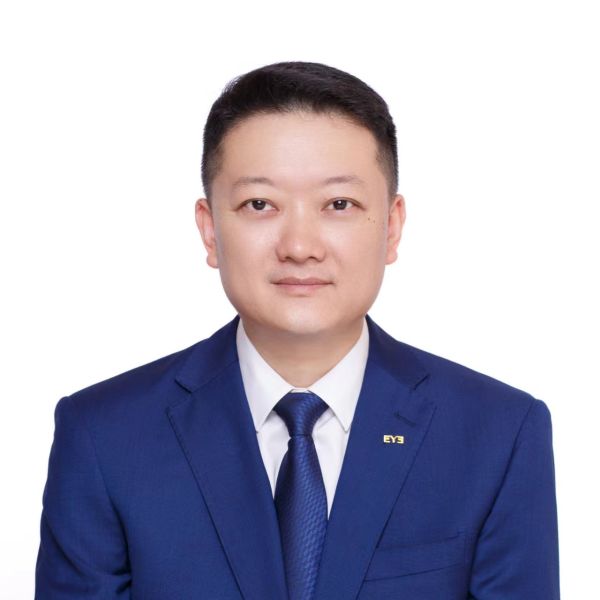
Mr. Fan Tang
The Information Construction Process of Aier EYE Hospital Group
5 key short sentences highlighting the essence of my presentation
- Information system in China
- Medical information construction
- Hybrid cloud model
- Self-developed medical business cloud platform
- Eye health big data platform
Summary of my presentation
The biggest challenge Aier Eye Hospital faces in informatization process is the lack of an information system in China that aligns with the operational model of an ophthalmology medical chain, particularly in terms of software products.
Base on this dilemma, AIER Ophthalmology began to lead the group’s medical information construction through self-developed methods in 2018. Aier Ophthalmology adopts a hybrid cloud model and has built a “four cloud, two center” architecture system, including four cloud architectures: medical business cloud, functional control cloud, data service cloud, and external collaboration cloud, as well as two major centers: production center and data center. This architecture system provides a solid foundation for the digital transformation of Aier Ophthalmology, achieving flexible resource scheduling and efficient utilization through cloud technology, and helping the group’s information and digital construction gradually move onto the fast lane.
In Aier Eye Hospital’s digital transformation, its self-developed medical business cloud platform and eye health big data platform have played an indispensable role.
The Platform has the characteristics of “focusing on ophthalmology, highly integrated, cloud deployment, on-demand, standardized implementation, and unified operation as well as maintenance”, which is the core competitiveness of Aier Ophthalmology in the field of digital healthcare.

Mrs. Zhan Tianjiao
Meeting Talent Demands and Empowering Development: Aier ‘s Approach to Ophthalmic Professionals’ training
5 key short sentences highlighting the essence of my presentation
- Ophthalmology and vision sciences are advancing swiftly, creating a high demand for skilled ophthalmologists
worldwide. - Aier Eye Hospital has made significant investments over the past 20 years to advance ophthalmology in China.
- Aier has developed a unique training system tailored to meet the career development needs of ophthalmologists.
- This system supports skill-building for ophthalmic professionals across all levels.
- Aier’s approach aims to cultivate top-tier talent for the global eye care industry through structured training, resource development, and comprehensive support.
Summary of my presentation
The field of ophthalmology and vision sciences is advancing rapidly worldwide, driving an increasing demand for skilled ophthalmologists. Over the past 20 years, Aier Eye Hospital has deeply invested in China, developing a distinctive training system for ophthalmologists tailored to their career development needs. This system provides essential support for the competency development of ophthalmic professionals at all levels. This presentation elaborates on Aier’s training mechanisms, platform and resource development, and overall approach, with the goal of fostering outstanding professionals in the global eye care industry.
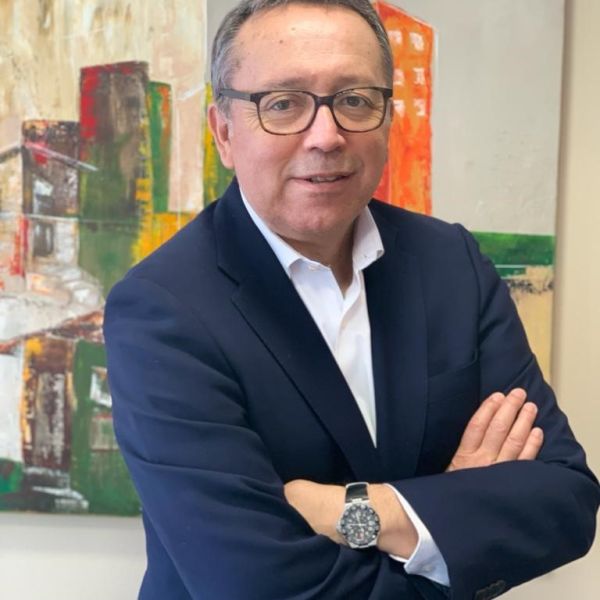
Mr. Santiago Venegas
Improve ophthalmology in Chile, the purpose of Clínica Pasteur
5 key short sentences highlighting the essence of my presentation
- The Pasteur clinic model, a private hospital in association with the public sector in Chile. A success story.
- Reference model in clinical management in ophthalmology
- Continuing medical education, training of ophthalmologists
for the public sector in Chile - Applied clinical research improving the cost-effectiveness of treatments in ophthalmology
- The ophthalmological ecosystem and multi-platform connectivity strategy with partners and patients
Summary of my presentation
Ophthalmology in Chile is a medical specialty with a large gap in patient care, both in the public and private sectors.
Pasteur’s purpose is to improve ophthalmology in the country. To achieve the purpose, Pasteur developed a strategy in three key areas. First, have a world-class clinical care model transferred from MEH, based on the structuring of a robust clinical governance, as well as clinical practices with high standards of quality and safety. Second, teaching and training of ophthalmologists for the public sector in association with the University of Santiago de Chile and the Ministry of Health, and third, developing an applied research program to improve the cost-effectiveness of specialty therapies.
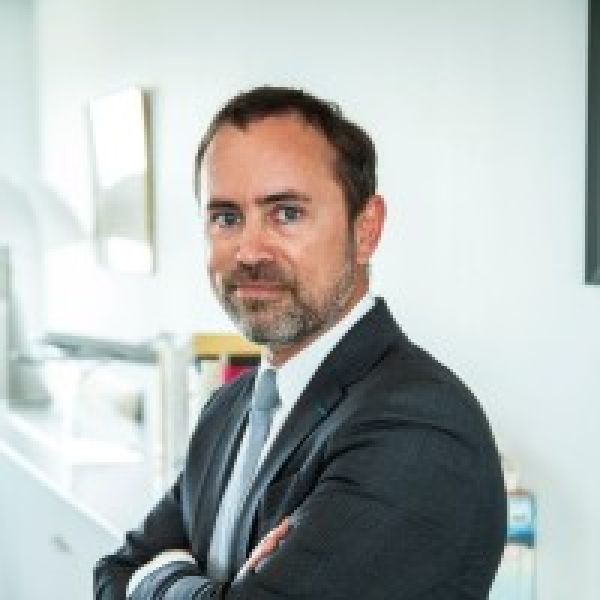
Mr. Fabrice Verriele
The hybridization of professional exercises in ophthalmology as a vector of qualification and motivation: the innovative systems implemented within the Rothschild Foundation Hospital
Member introduction: Hopital Fondation Adolphe Rothschild, France
5 key short sentences highlighting the essence of my presentation
- Hybridization of ophthalmologists’ modes of practice
- Innovative systems to promote and support transformations of the framework of practice and qualification
- Enhancement of paramedical functions
- Complete digitalization of the patient care process
- Systematization of interdisciplinary approaches, particularly in the field of research
Summary of my presentation
The professional practice of ophthalmology is undergoing a radical transformation which is forcing health establishments specializing in this pathology to drastically adapt the framework of practice and qualification of the employees concerned.
The Rothschild Foundation Hospital, which is the largest health establishment specializing in ophthalmology in France, has implemented several innovative systems to promote and support these transformations:
- Enhancement of paramedical functions (systematization of work assisted by orthoptists – optometrists);
- Complete digitalization of the patient care process, including remotely and offline;
- Systematic hybridization of ophthalmologists’ modes of practice: salary/fee-for-service, 1st level offer/hyperspecialization, clinical/research, innovation and valorization, local/international commitment, etc.
- Systematization of interdisciplinary approaches, particularly in the field of research, within the framework of partnerships with fundamental research laboratories, particularly in mathematics or genetics;
- Evolution of training systems, both initial and continuing (simulation, robotics, data sciences, etc.);
- Maintaining a strong human dimension as a counterpoint to all these very technical approaches with the establishment of a mentoring program promoting in particular the advancement of women in the medical and academic hierarchy.
The Adolphe de Rothschild Foundation Hospital, founded in 1905, specializes in all Head and Neck pathologies (ophthalmology, neuroscience, ENT) in adults and children. This non-profit university hospital is a private healthcare establishment of public interest (ESPIC) that provides excellent care in sector 1.
They conduct more than 300,000 exams and tests each year and take in more than 40,000 ophthalmologic emergencies. With their state-ofthe-art technical equipment and world-renowned experts, their departments are regularly rated among the best in France. They cover the full spectrum of care, research, and university education, piloting more than 180 clinical research studies, publishing more than 350 scientific research papers per year and training more than 921 students per year.
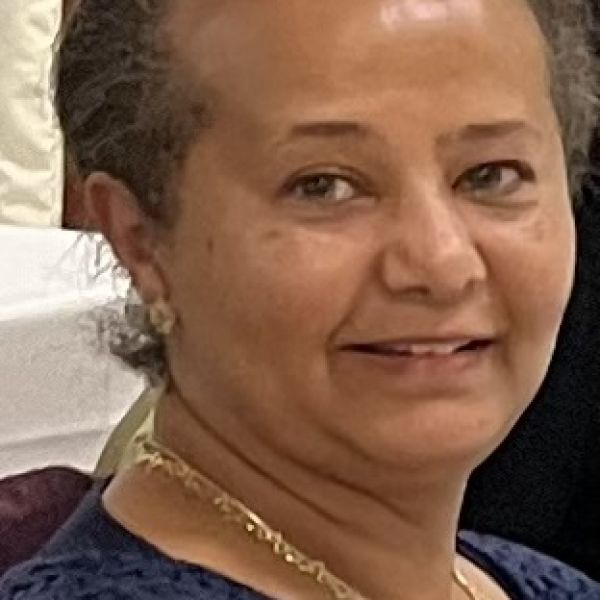
Dr. Hirut von Lany
The psychological impact of ocular trauma
5 key short sentences highlighting the essence of my presentation
- Severe eye trauma is a low likelihood high-impact event
- Eye trauma can result in physical and psychosocial problems
- Eye trauma can have far reaching impacts
- Limited information in the available literature
- A coordinated approach is essential
Summary of my presentation
Severe eye trauma is rare so it needs guidelines. The presentation summarises insights from a review of available literature and considers, via case studies, typical treatment pathways. The presentation concludes that the effective management of severe eye trauma requires not only physical treatment, but it also requires coordinated psychological, social and practical treatments to address the practical challenges that arise affecting patients, their families, and their broader work and social environment.
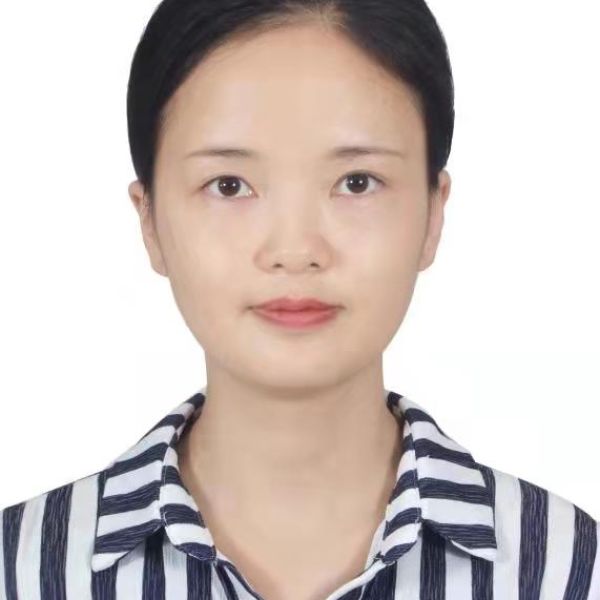
Dr. Ji Wang
Automated Explainable Multidimensional Deep Learning Platform of Retinal Images for Retinopathy of Prematurity Screening
5 key short sentences highlighting the essence of my presentation
- Myopia
- Children and adolescents
- Epidemiology
- Myopia full-correction
- Spectacle wear
Summary of my presentation
Purpose: This study investigated the situation related to myopia among students in Chengdu, a city in western China, and analyzed the prevalence of myopia spectacle wear and myopia full-correction and their influencing factors to understand the current status of myopia prevention.
Methods: 1,582 schools in seven districts of Chengdu City, China, enrolling a total of 417,337 students aged 6-18 years (elementary, middle, and high school) from 2020 through 2022. Examination items included uncorrected visual acuity (UCVA), slit lamp examination and non-cycloplegic autorefraction.
Results: The average age of the entire survey population was (10.96 ± 3.5 years), and the overall prevalence of myopia was 48.7%, myopia spectacle wear was 65.7% and myopia full-correction was 50.5%. With increasing age and educational levels, the prevalence of moderate to high myopia, the prevalence of myopia spectacle wear, and the prevalence of myopia full-correction all rise. the prevalence of mild myopia full-correction (46.5%) was higher than that for moderate myopia (47.1%) and even higher than that for high myopia (39.6%).
Conclusions: The prevalence of myopia among children and adolescents in Chengdu is relatively low, and the prevalence of myopia spectacle wear and myopia full-correction need to be improved.

Dr. Jing Wei
Large-scale study in Chengdu, China: the prevalence of myopia full-correction decreased with increasing myopia in adolescents
5 key short sentences highlighting the essence of my presentation
- Myopia
- Children and adolescents
- Epidemiology
- Myopia full-correction
- Spectacle wear
Summary of my presentation
Purpose: This study investigated the situation related to myopia among students in Chengdu, a city in western China, and analyzed the prevalence of myopia spectacle wear and myopia full-correction and their influencing factors to understand the current status of myopia prevention.
Methods: 1,582 schools in seven districts of Chengdu City, China, enrolling a total of 417,337 students aged 6-18 years (elementary, middle, and high school) from 2020 through 2022. Examination items included uncorrected visual acuity (UCVA), slit lamp examination and non-cycloplegic autorefraction.
Results: The average age of the entire survey population was (10.96 ± 3.5 years), and the overall prevalence of myopia was 48.7%, myopia spectacle wear was 65.7% and myopia full-correction was 50.5%. With increasing age and educational levels, the prevalence of moderate to high myopia, the prevalence of myopia spectacle wear, and the prevalence of myopia full-correction all rise. the prevalence of mild myopia full-correction (46.5%) was higher than that for moderate myopia (47.1%) and even higher than that for high myopia (39.6%).
Conclusions: The prevalence of myopia among children and adolescents in Chengdu is relatively low, and the prevalence of myopia spectacle wear and myopia full-correction need to be improved.
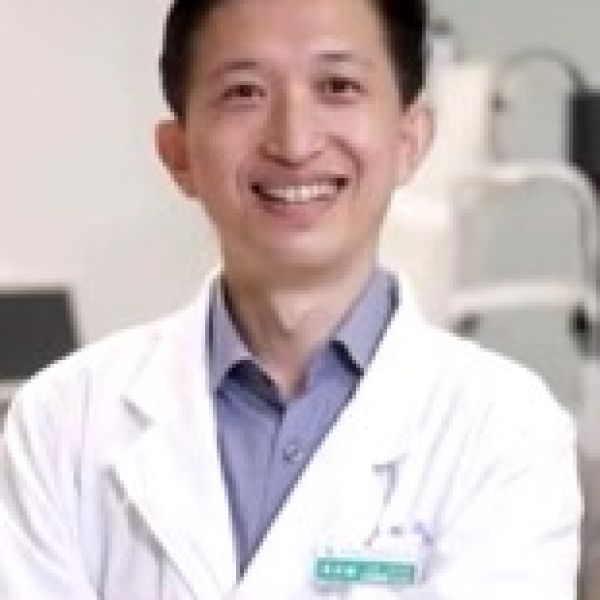
Dr. Ronghan Wu
Vitrectomy Surgery under Different Media: Innovations and Applications of Modern Vitrectomy Surgery
5 key short sentences highlighting the essence of my presentation
- Thoughts and innovations in modern vitrectomy surgery.
- Advantages and operating techniques of vitrectomy under air.
- Other uses of BSS perfusion in vitrectomy surgery.
- The auxiliary function of PCFL in vitrectomy surgery.
- The efficiency and safety of new technologies applied in vitrectomy.
Summary of my presentation
I will present some straightforward and effective surgical techniques that I have successfully employed in the past. In recent years, I have explored the innovative approach of performing vitrectomy under air. This new technology has been employed in various vitreoretinal surgeries, offering advantages such as high efficiency, enhanced safety, and an expansive field of view. Most notably, it proves particularly beneficial in scenarios requiring stabilization of the retina for peeling and posterior vitreous detachment. In addition, I will introduce the comparison of surgeries performed in different media. Historically, the role of the perfusion tube was overlooked. I have developed its secondary function as a “nozzle” for removing foreign matter from the retinal surface. Additionally, PFCL was once regarded merely as an auxiliary tool for expelling subretinal fluid. I have devised a series of surgical techniques utilizing PFCL to enhance the safety and efficiency of surgery. I believe that through my lectures, retina experts worldwide will recognize Innovation in Ophthalmology (including cutting-edge research) the vast potential of modern vitrectomy.
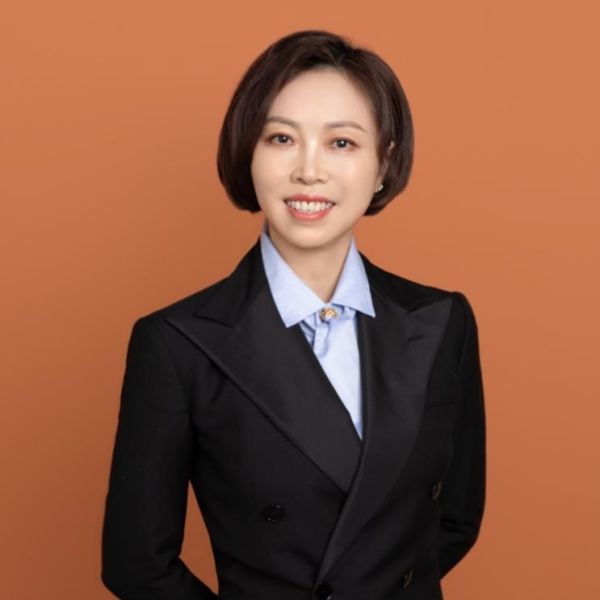
Dr. Bin Xiang
Supporting and Leading High-quality Development with Sci- tech Innovation —Introduction to AIER Global Ophthalmic Medical Research Center
5 key short sentences highlighting the essence of my presentation
- Innovation-Driven Development
- Scientific Research Management System
- Innovation in Science and Technology
- Integration of Innovation and Industrial Chains
- Eye Health Services Ecosystem and High-Quality Development
Summary of my presentation
Leading by science and technology, AIER Eye Hospital Group steadfastly pursues excellence with innovation-driven development. With a well-organized scientific research management system, AIER consistently promotes innovation in development philosophy, institutions and science and technology. It has deployed the innovation chain based on the industrial chain and vice versa, gradually formed an intertwined development chain involving education and sci-tech innovation, serving for the establishment of eye health services ecosystem and high-quality development.

Dr. Dan Xu
Member introduction: The Eye Hospital of Wenzhou Medical University, China
The Eye Hospital, Wenzhou Medical University has found its ways to thrive within the contexts in China to become one of the world-leading institutes in providing ophthalmology and optometry training, education, research, and clinical care at the international standards within 2 decades. It is also the only eye institute in China that possesses 4 national-level research centers (National Clinical Research Center for Ocular Disease, State Key Laboratory of Ophthalmology, Optometry and Visual Science, National Engineering Technology Research Center for Ophthalmology and Optometry, and NMPA Key Laboratory for Medical Devices and Drugs for Ophthalmic Diseases). The Hospital is instrumental to the unique medical program in which medical graduates could be both medical doctors and optometrists. Over one-eighth of the eye doctors in China were trained by the hospital.
With its annual outpatient visits exceeded 1.2 million and annual surgery volume over 87,000 in 2023, it continues to serve the patients with specialized eye care of high quality. The SCI-indexed journal Eye and Vision, which is the top eye journal from China, was established by the Eye Hospital in 2015.

Dr. Deqi Yang
Member introduction: Shenyang Sinqi Eye Hospital, China
Shenyang Sinqi Eye Hospital, established in 2019, is a specialized hospital focused on ophthalmic care, research, and innovation.
They are recognized for their expertise in pediatric and adolescent myopia control, having established the Shenyang Clinical Research Center for Myopia and a regional big data platform for myopia management.
Their commitment to improving ophthalmic care is evident through our clinical trials for pharmaceuticals and medical devices, striving to provide our patients with secure and effective treatments.
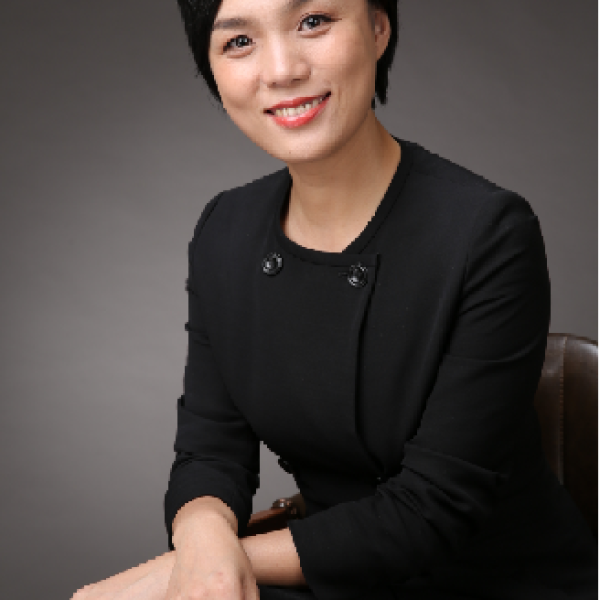
Mrs. Yongmei Zhang
Building a Comprehensive Ecosystem for Ophthalmic Innovation and Technology Transfer
5 key short sentences highlighting the essence of my presentation
- How do national-level policies influence technological innovation and the transformation of research outcomes in
the ophthalmology sector? - What specific practices has Aier Eye Hospital Group implemented to become a technology-driven enterprise?
- How does Aier Eye Hospital Group invest in and achieve significant technological advancements in ophthalmology?
- What are the successful strategies Aier Eye Hospital Group uses to transform research outcomes into practical
applications? - How does Aier Eye Hospital Group create a complete closed- loop ecosystem?
Summary of my presentation
This presentation will begin with an overview of national-level policies on technological innovation and the transformation of research outcomes. It will then delve into the specific practices undertaken by Aier Eye Hospital Group to establish itself as a technology-driven enterprise. The focus will be on Aier Eye Hospital Group’s commitment to technological innovation, including resource investment and the achievement outputs. The presentation will cover the establishment of Aier’s basic research institutes, the funding of scientific research projects, and the outcomes of these technological achievements.
The presentation will also explore Aier Eye Hospital Group’s successful experiences in the transformation of research outcomes into practical applications, including the creation of a platform for the commercialization of innovations, the establishment of an industrial incubation fund, the development of supporting industrial parks, and the integration of upstream and downstream resources. These initiatives aim to transform scientific achievements into new productive forces, creating a complete closed-loop ecosystem from basic research to industrialization and then to clinical services. Ultimately, these efforts position Aier Eye Hospital Group as a leader in the global development of ophthalmology.
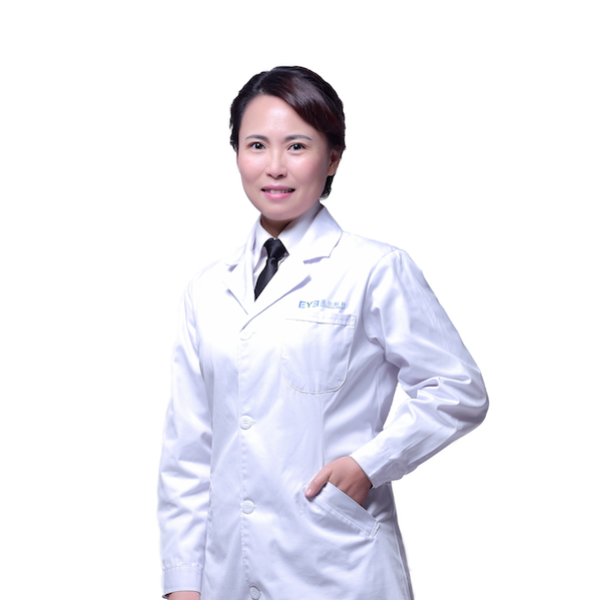
Dr. Qizhi Zhou
My Views on the Development of Emerging Private Eye Hospitals
5 key short sentences highlighting the essence of my presentation
- Emerging Eye Hospital Development
- Hypercompetitiveness and fast-changing Environment
- Featured Products and Value-added Services
- Unique hospital operational model
- ICL drives refractive surgery growth
Summary of my presentation
Part 1: Current Challenges for Emerging Private Eye Hospitals
Limited resources, lack of reputation, difficulties in acquiring patients, medical regulatory inspections (medical insurance, healthcare commission, market supervision, taxation, etc.), and hypercompetitiveness within the industry.
Part 2: How to Emerge from these Challenges:
Develop the hospital’s unique products
Create value-added service
Initiate a comprehensive “Cost-saving and Revenue-generating” Operational model
Part 3: Our Experience
Using ICL to drive refractive surgery growth, and leveraging refractive surgery to lead overall hospital development.
Conclusion:
Emerging private eye hospitals need new approaches to achieve future success in a fast-changing environment.